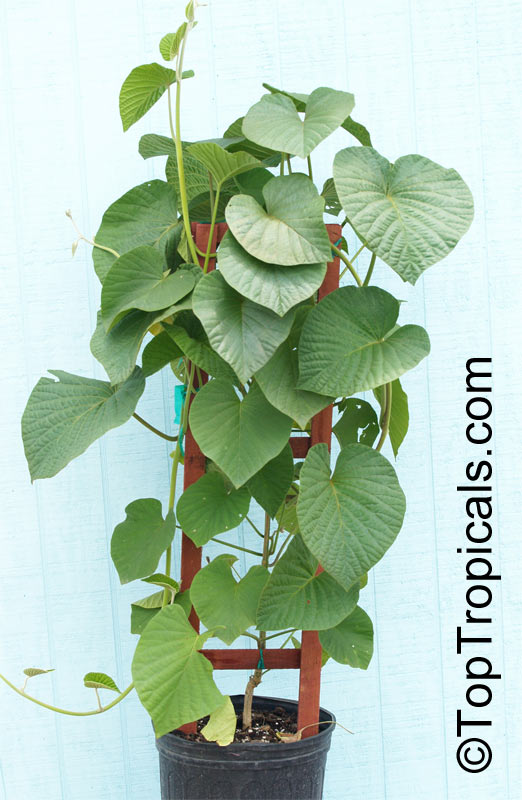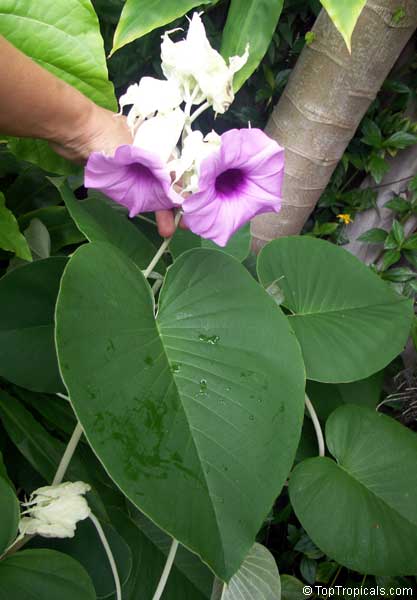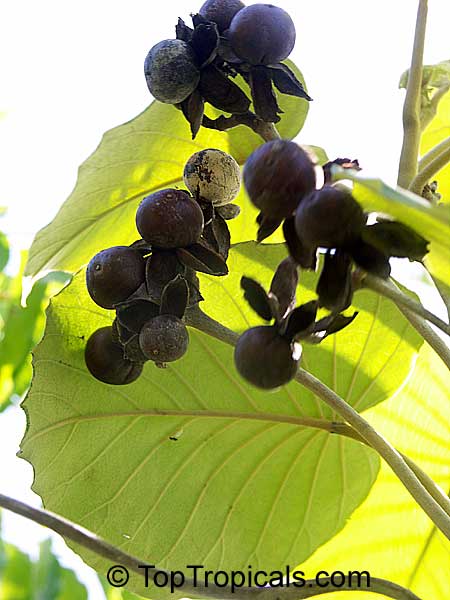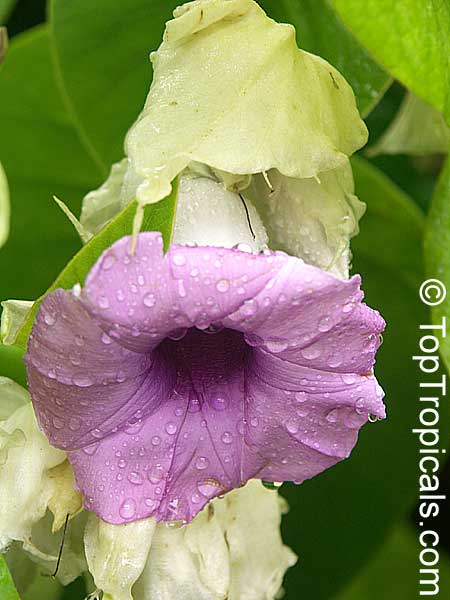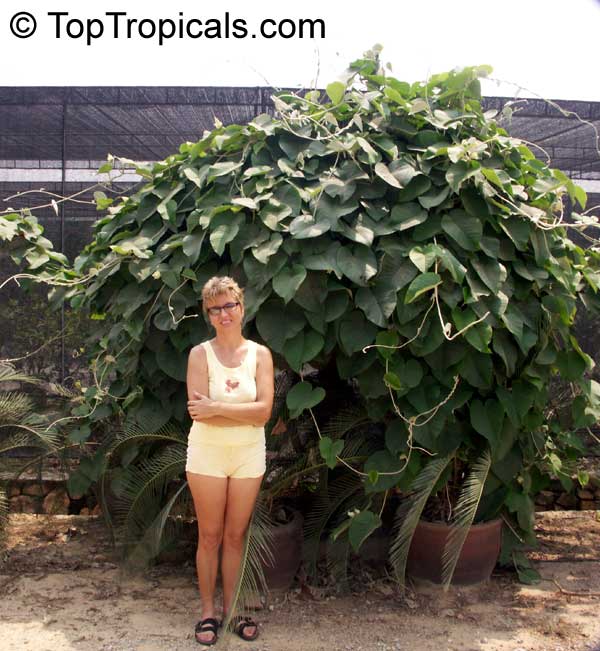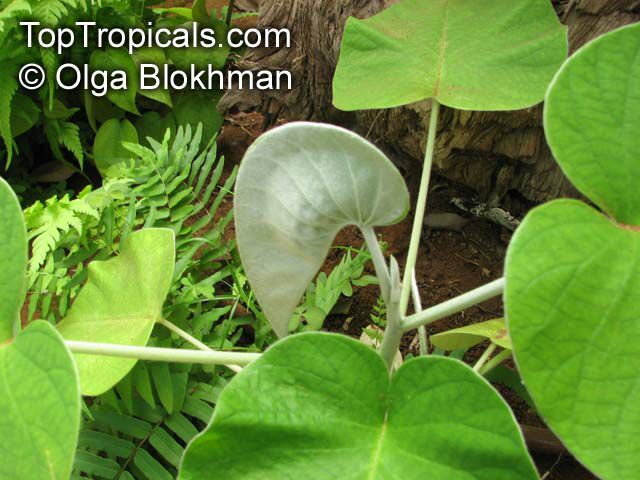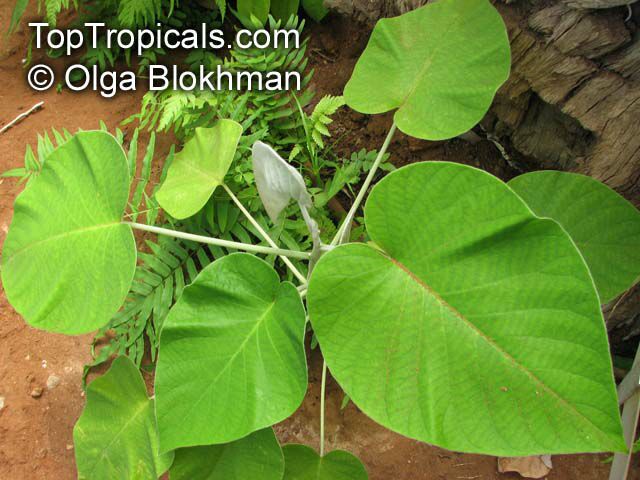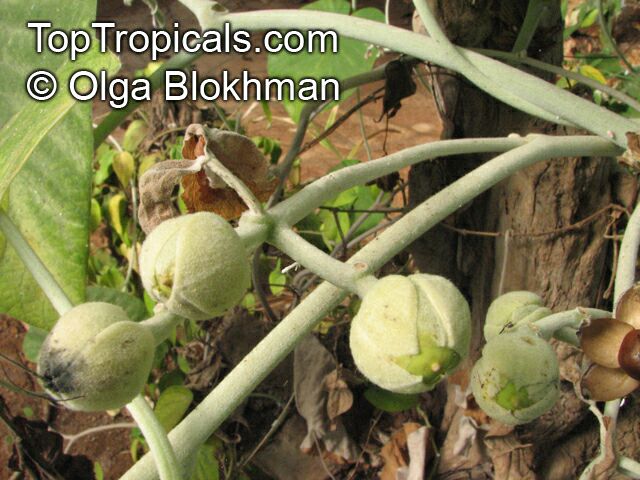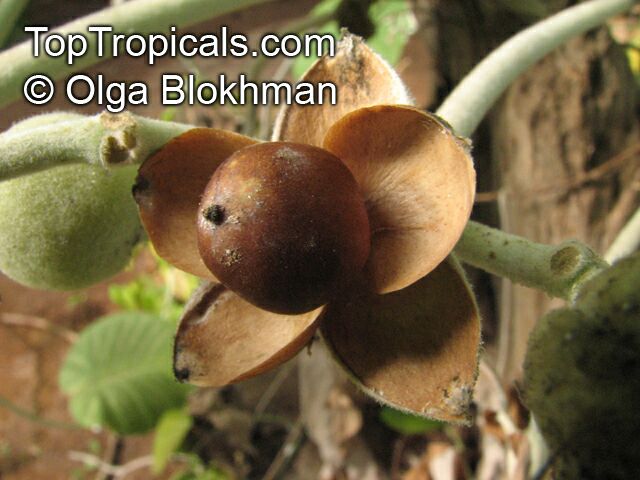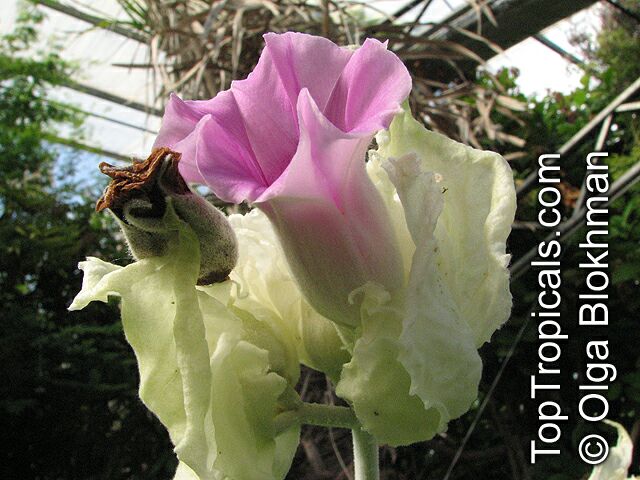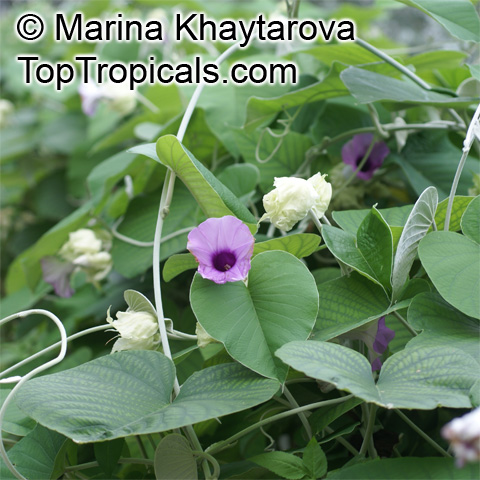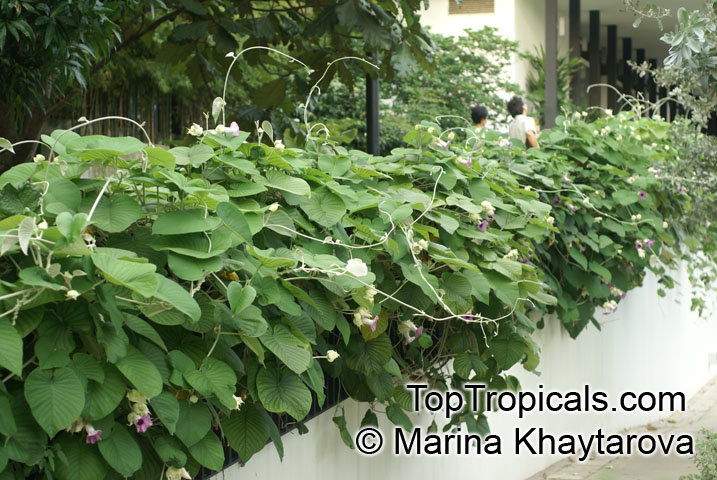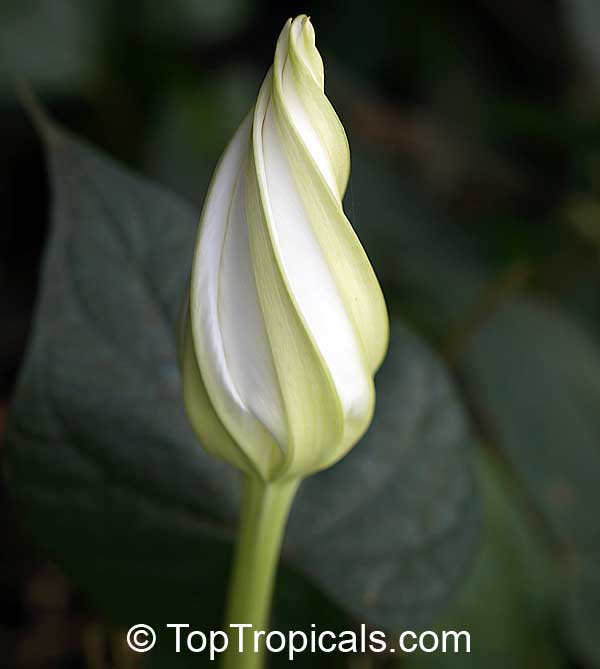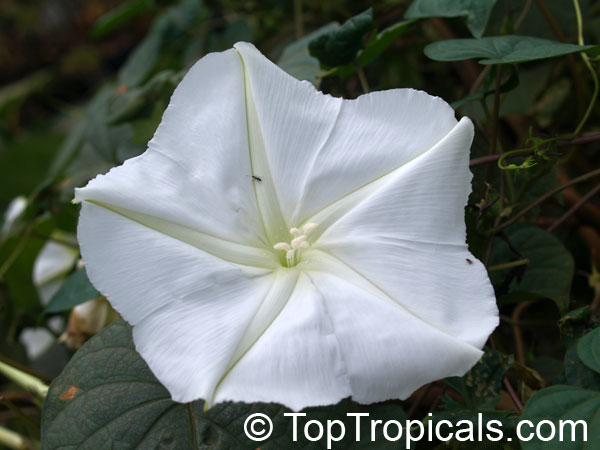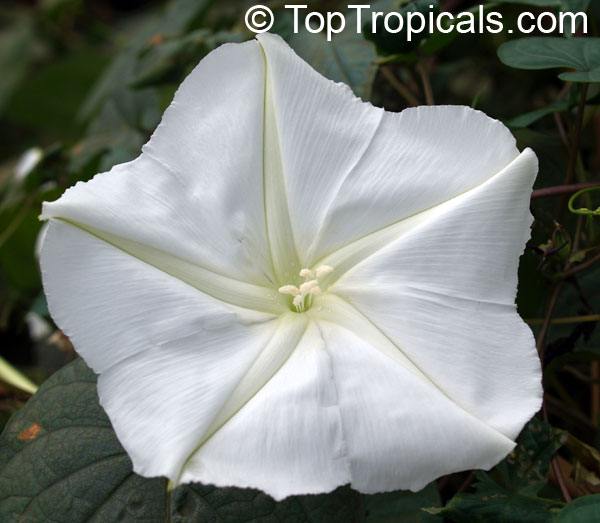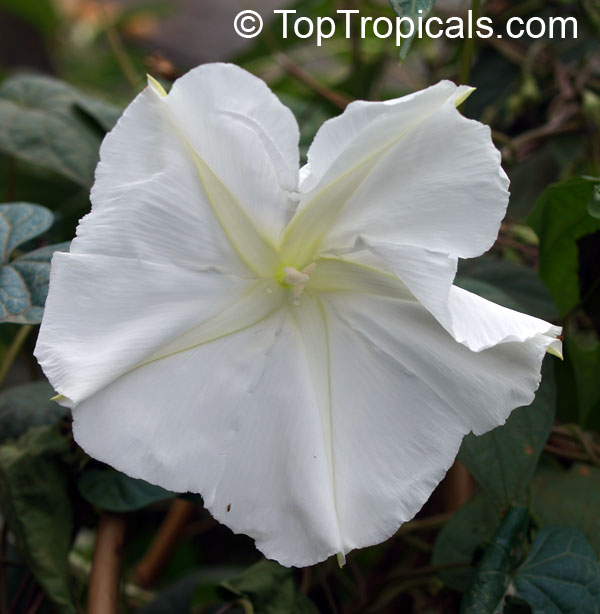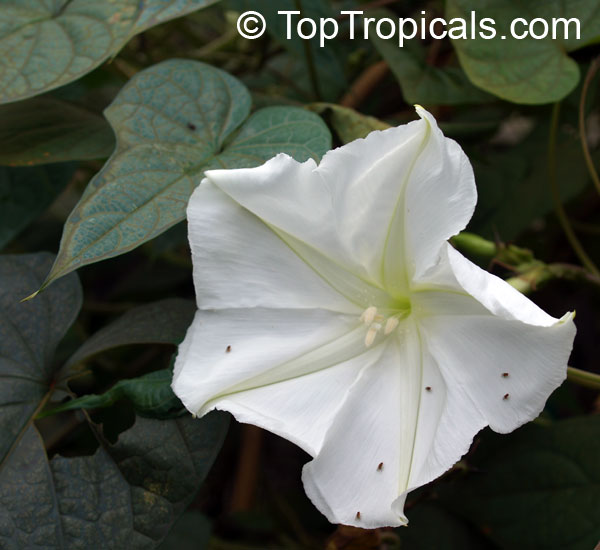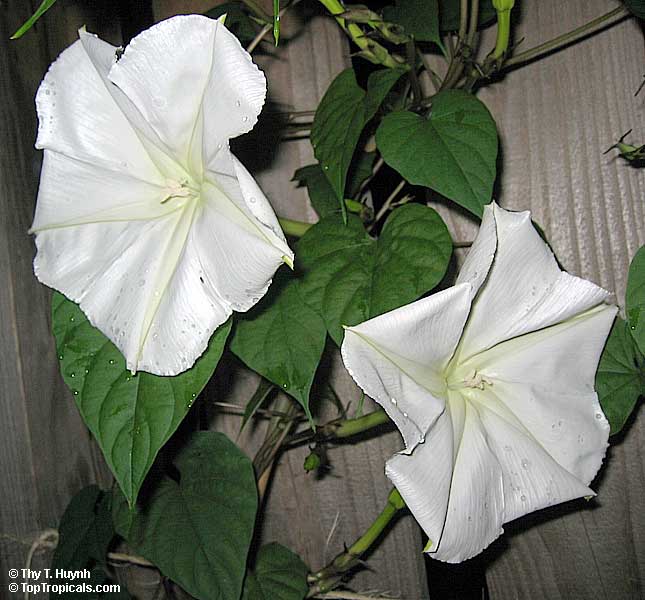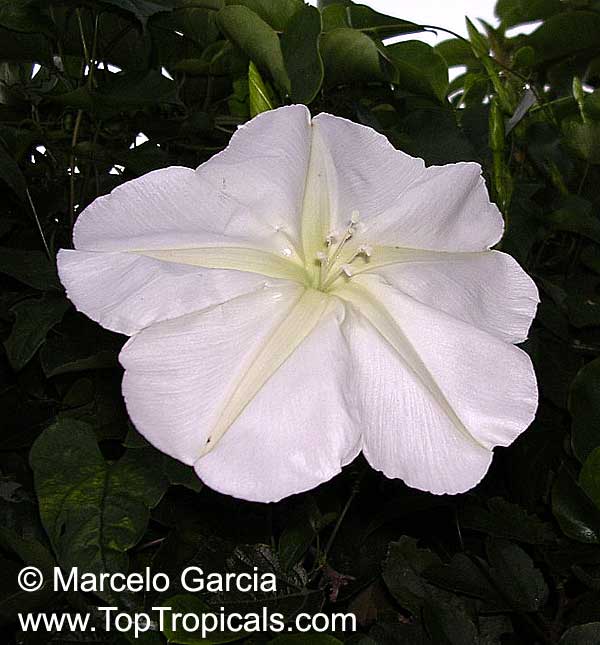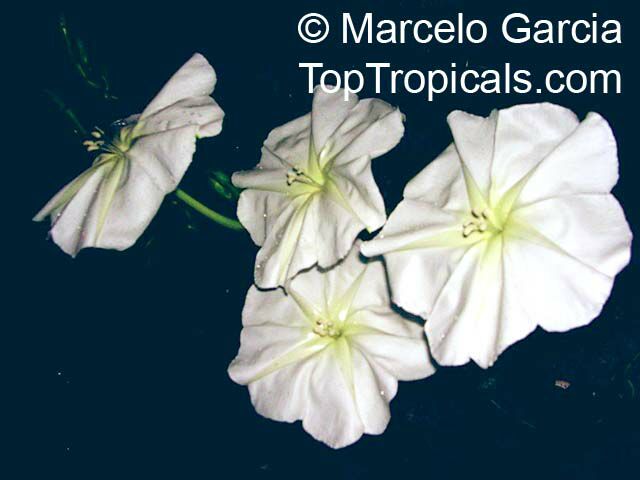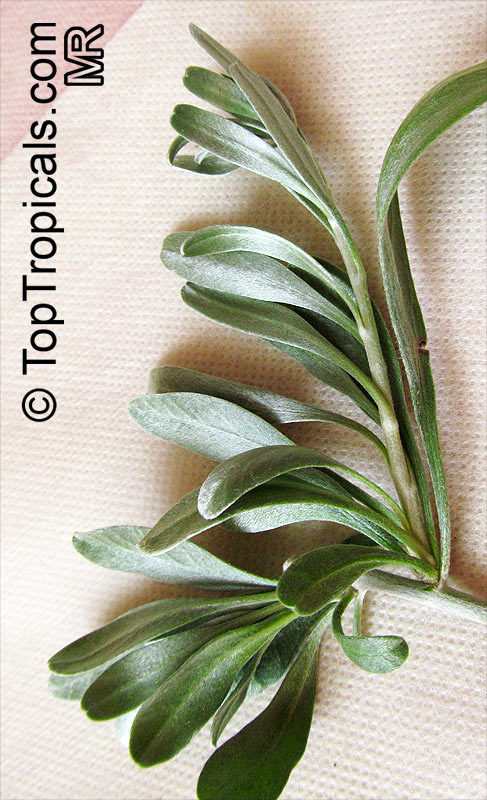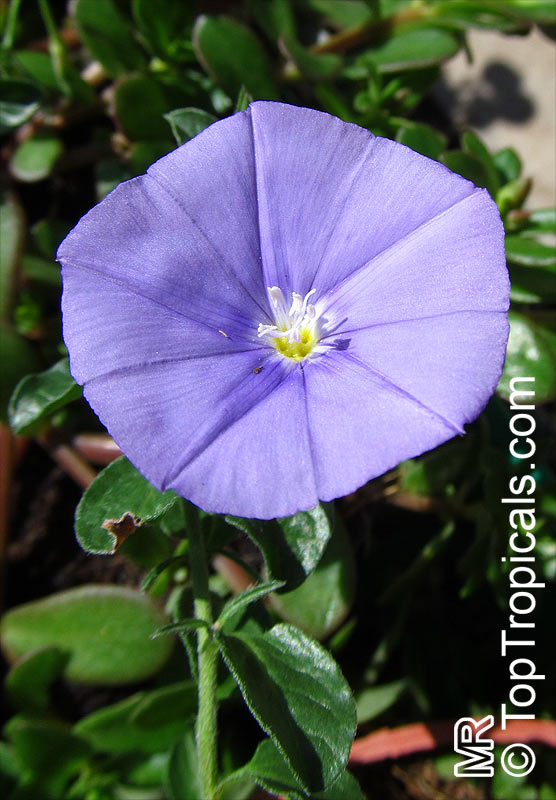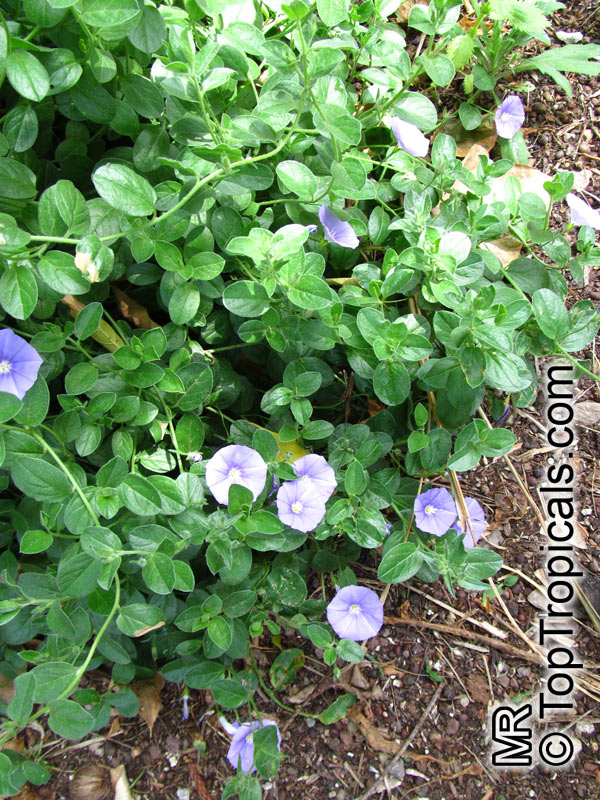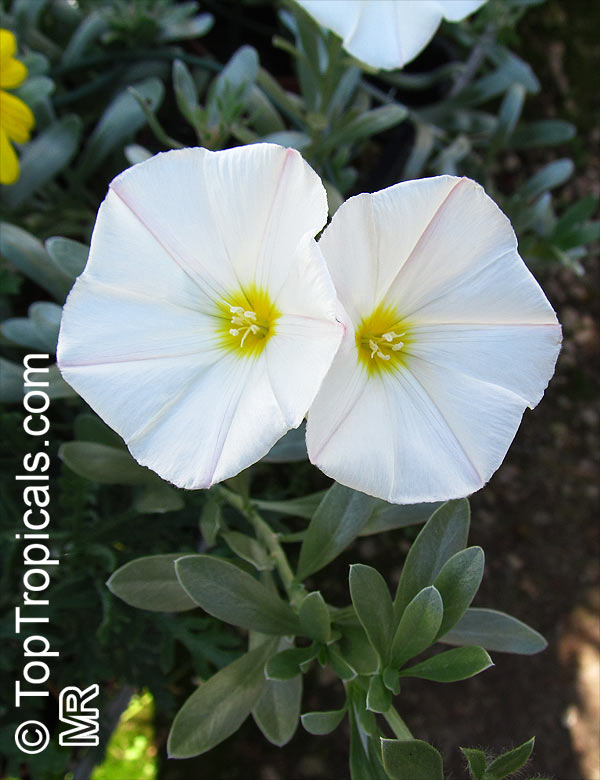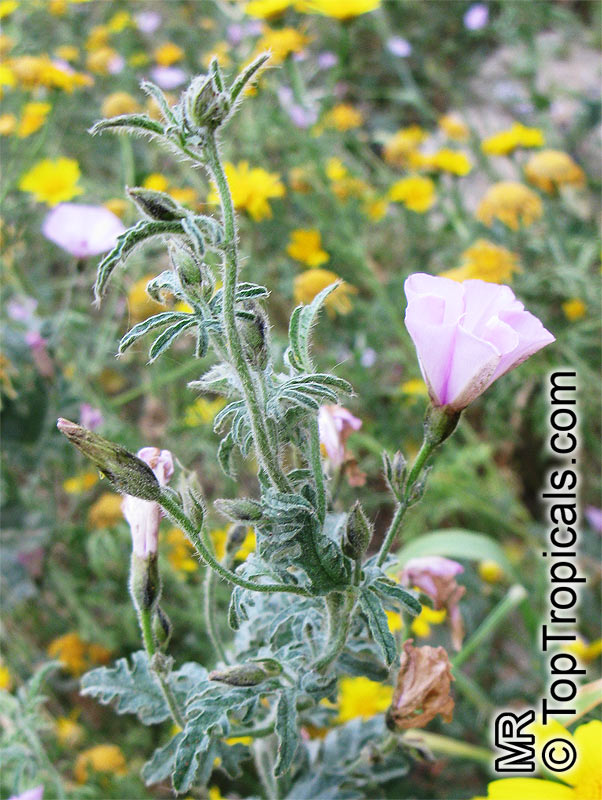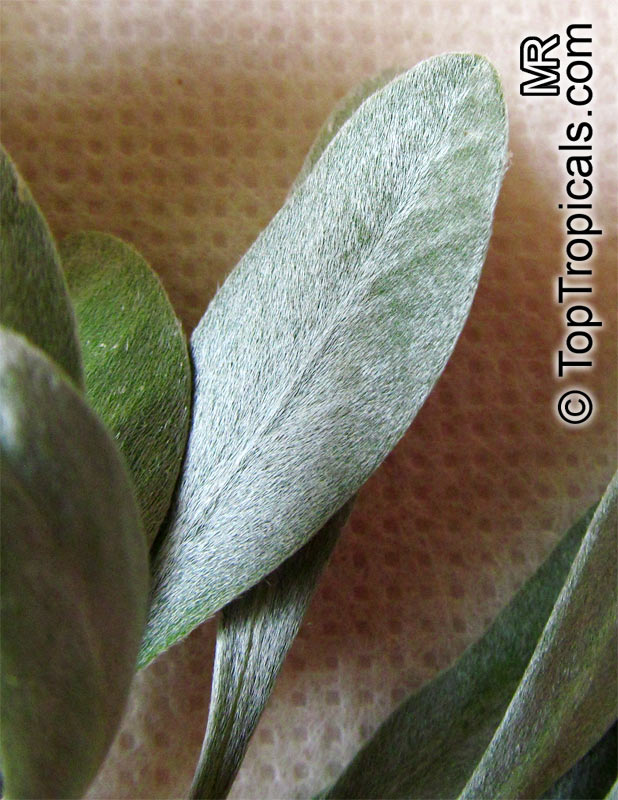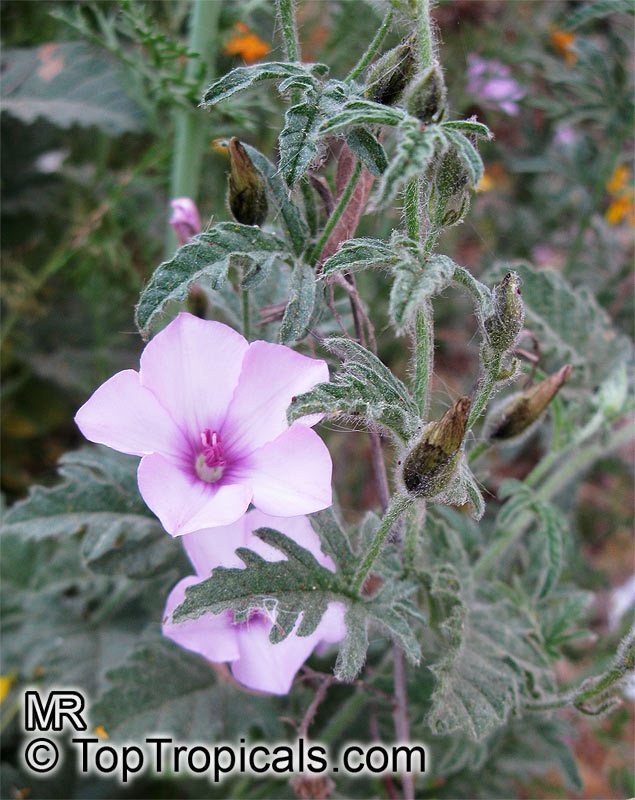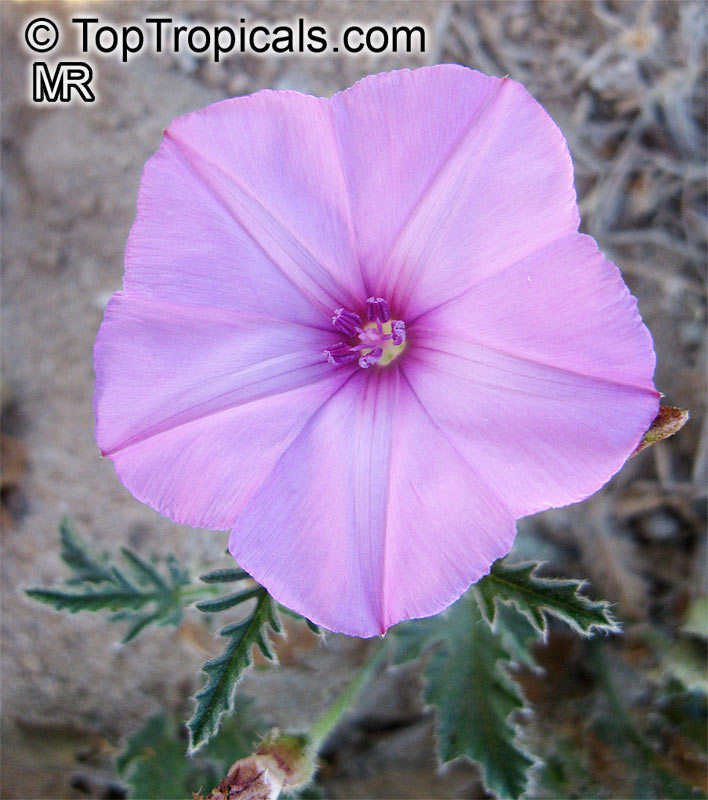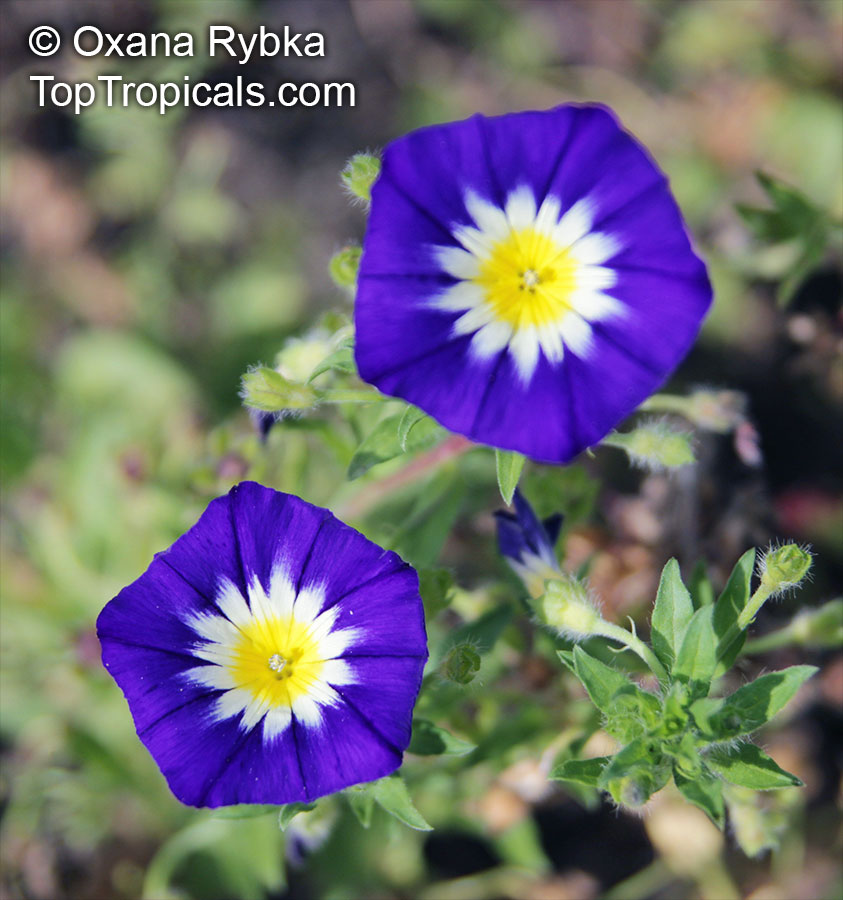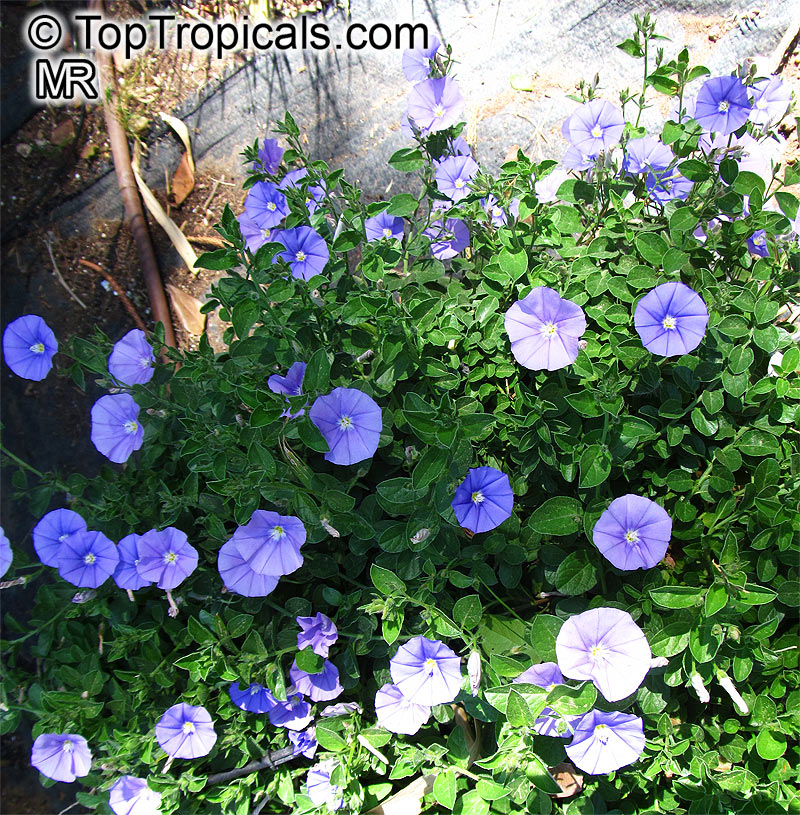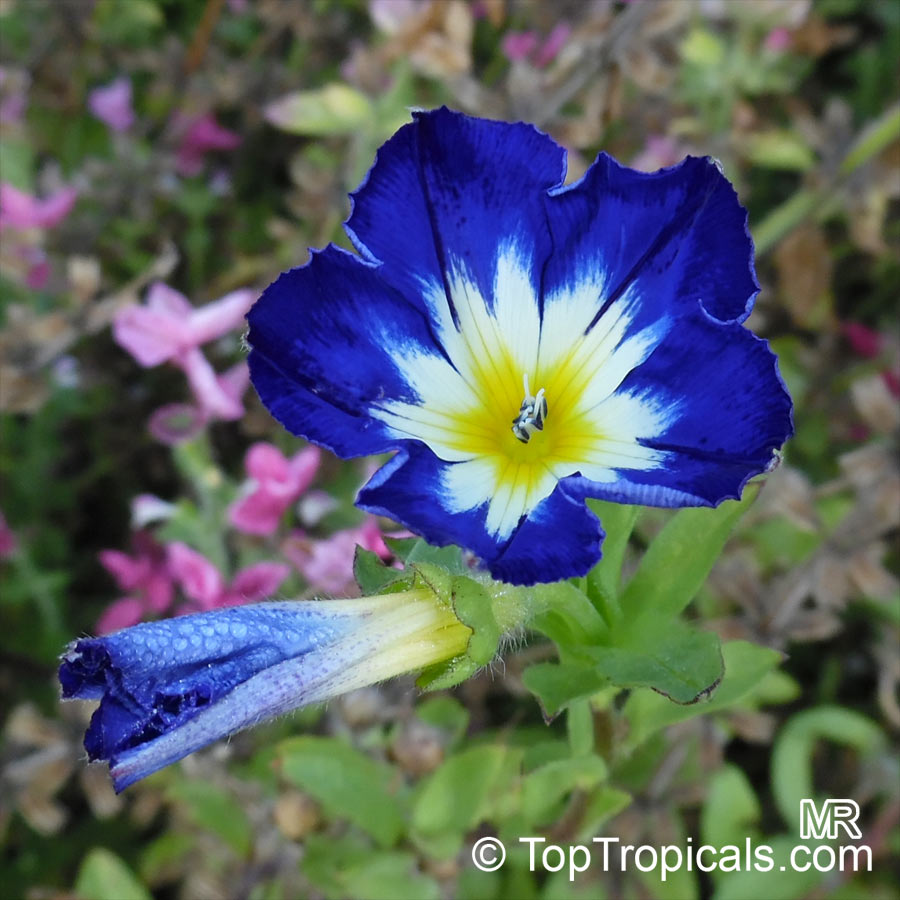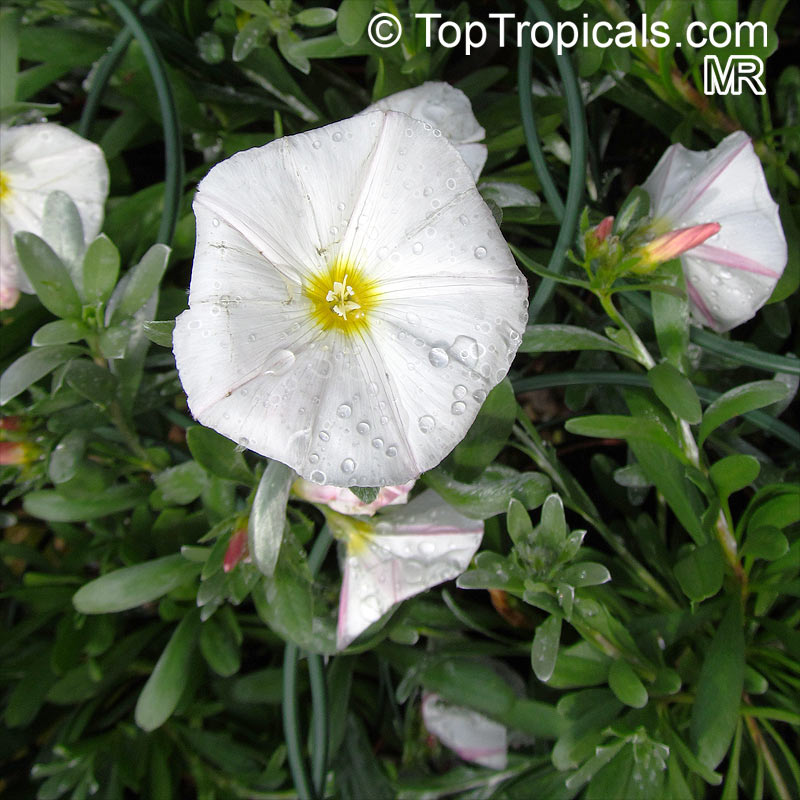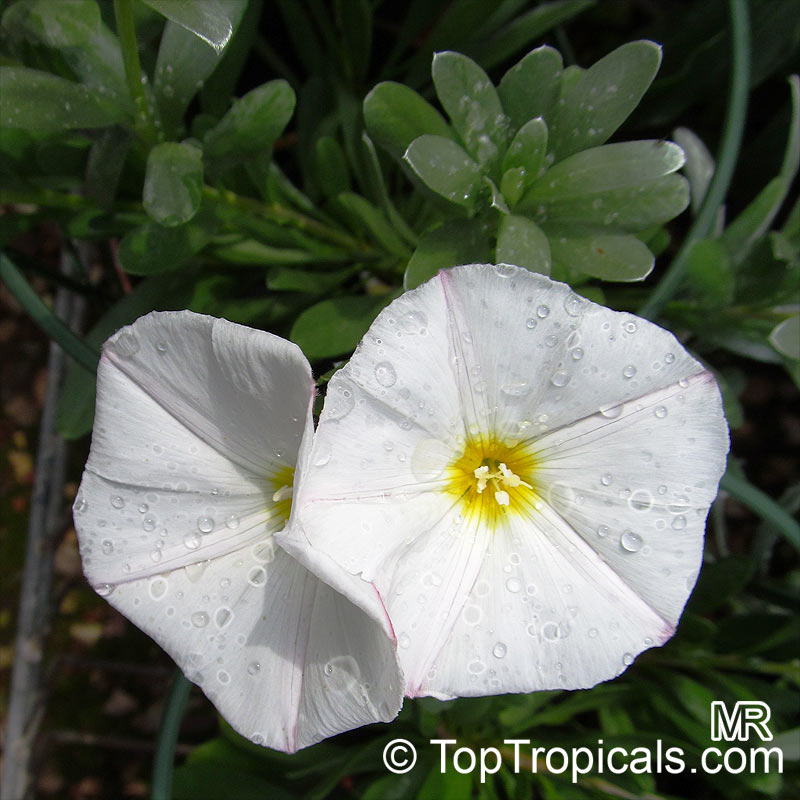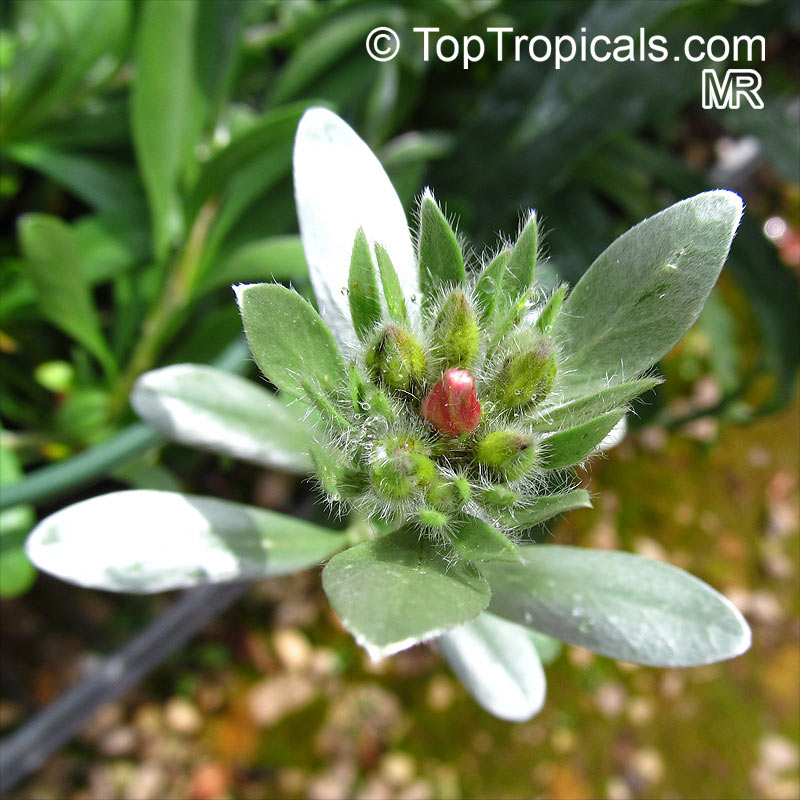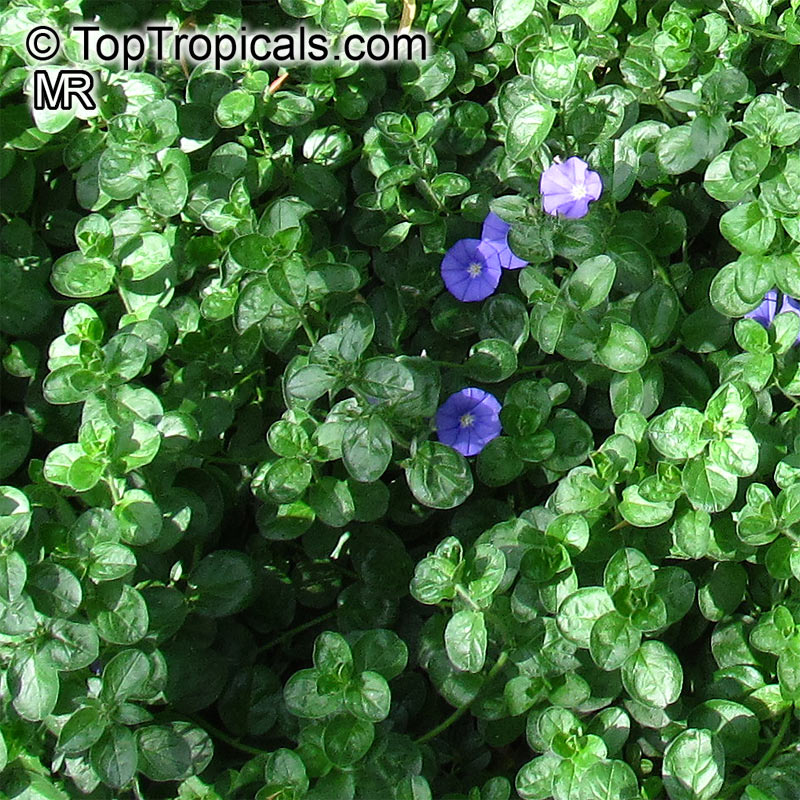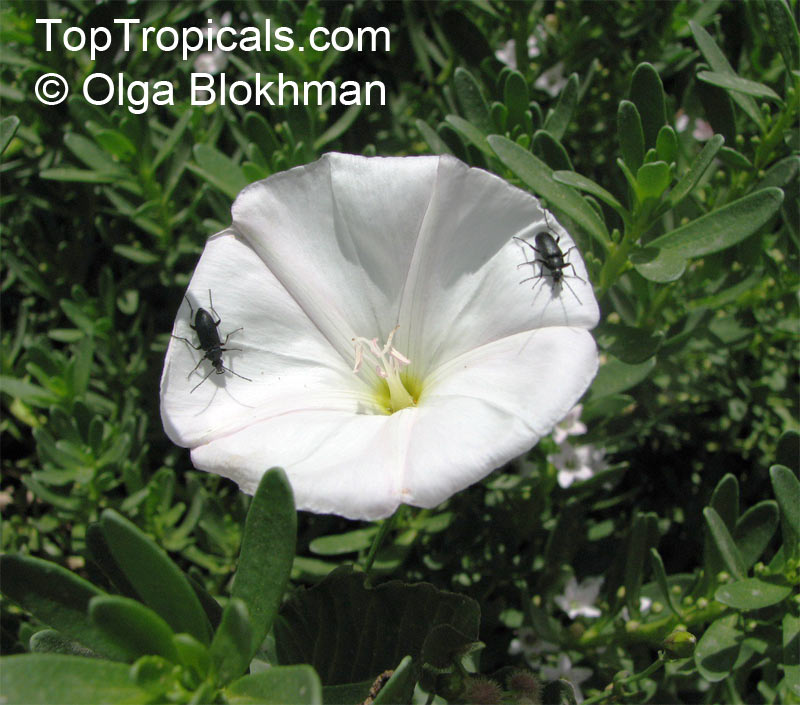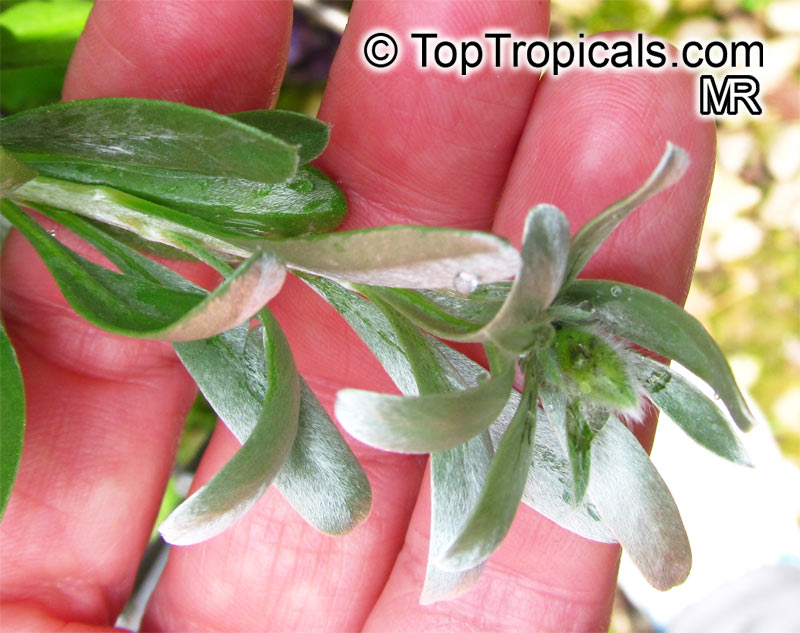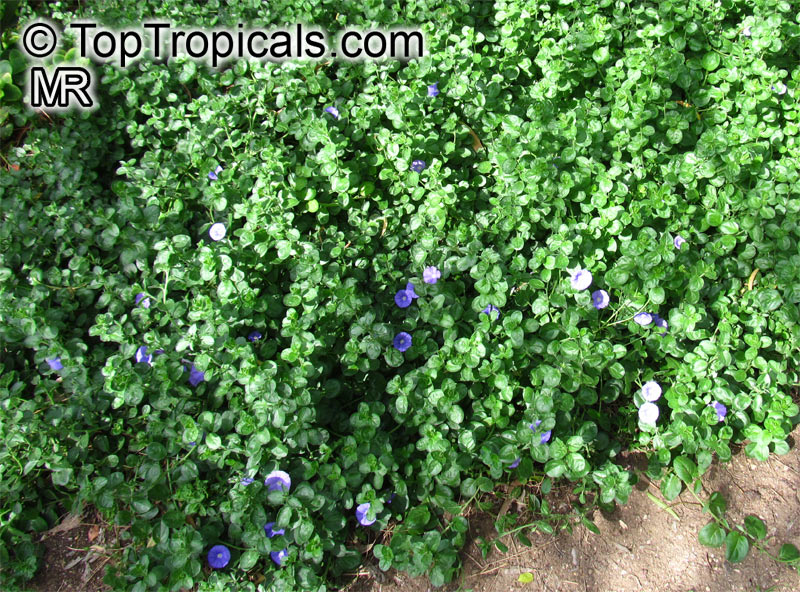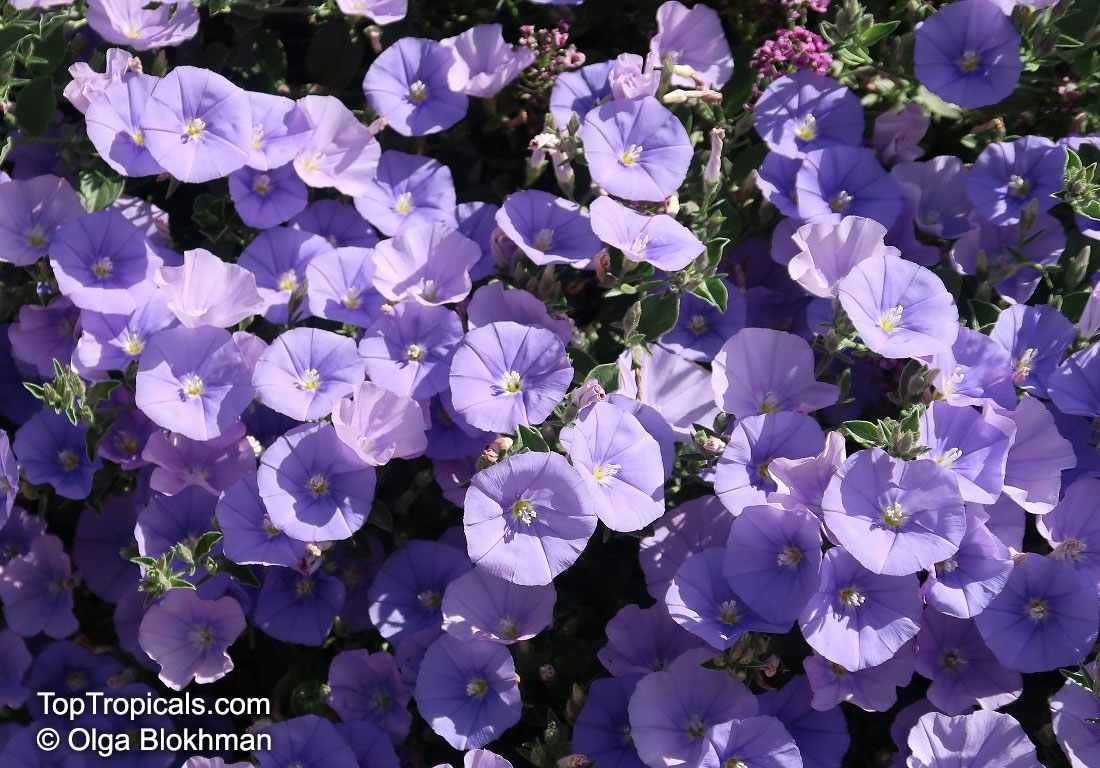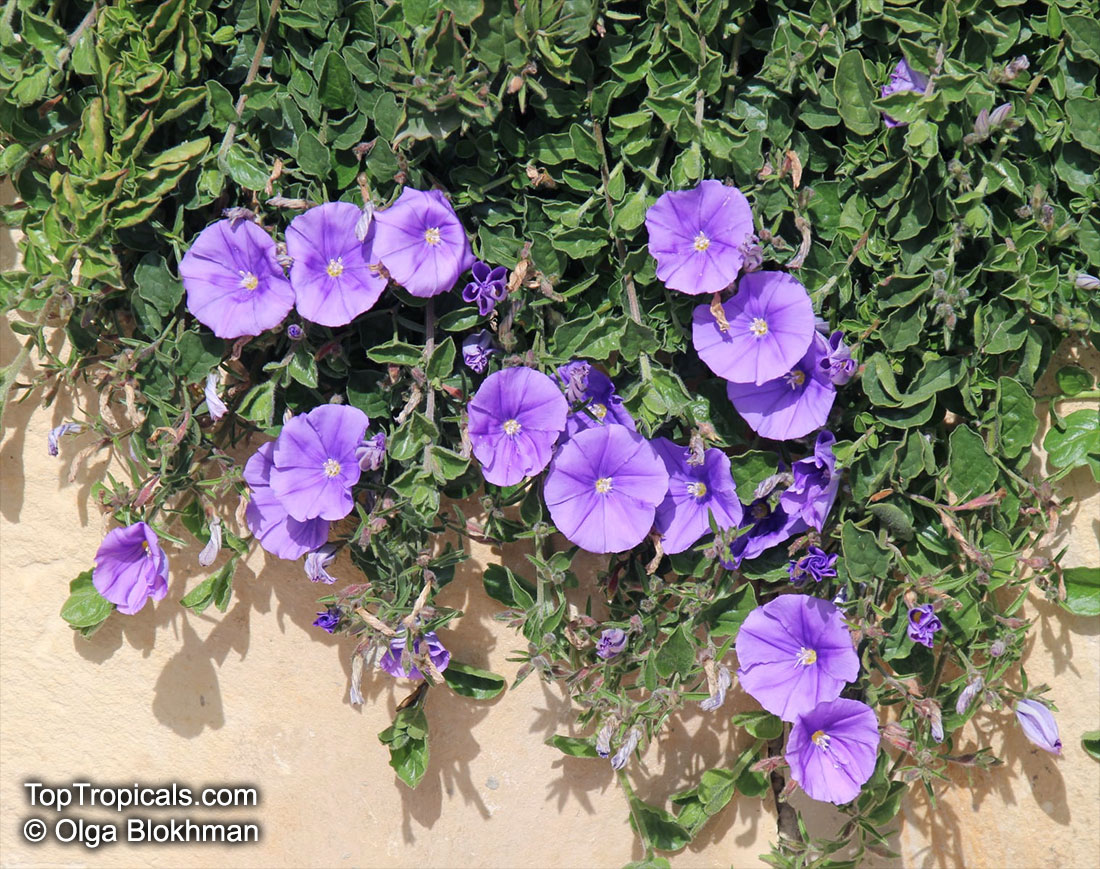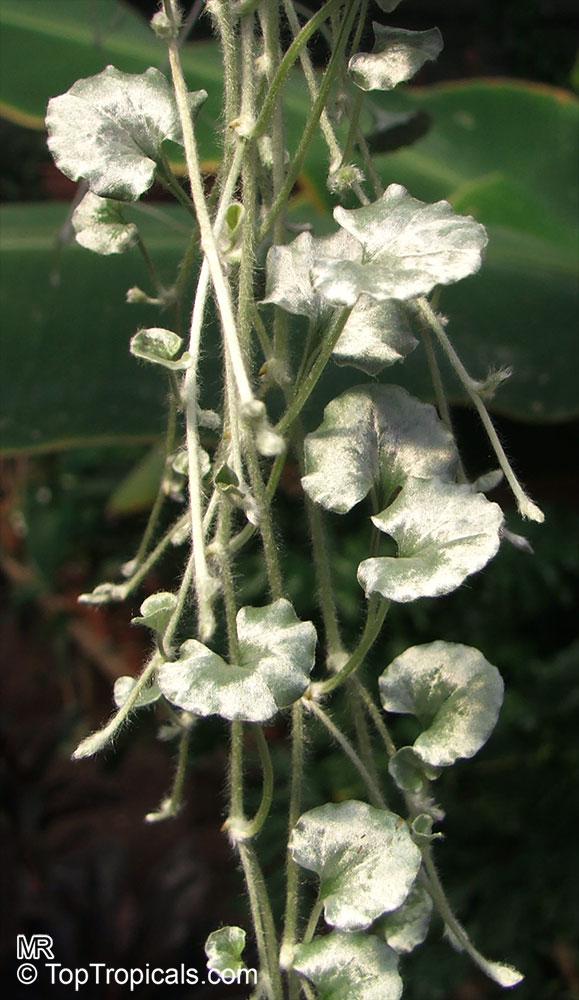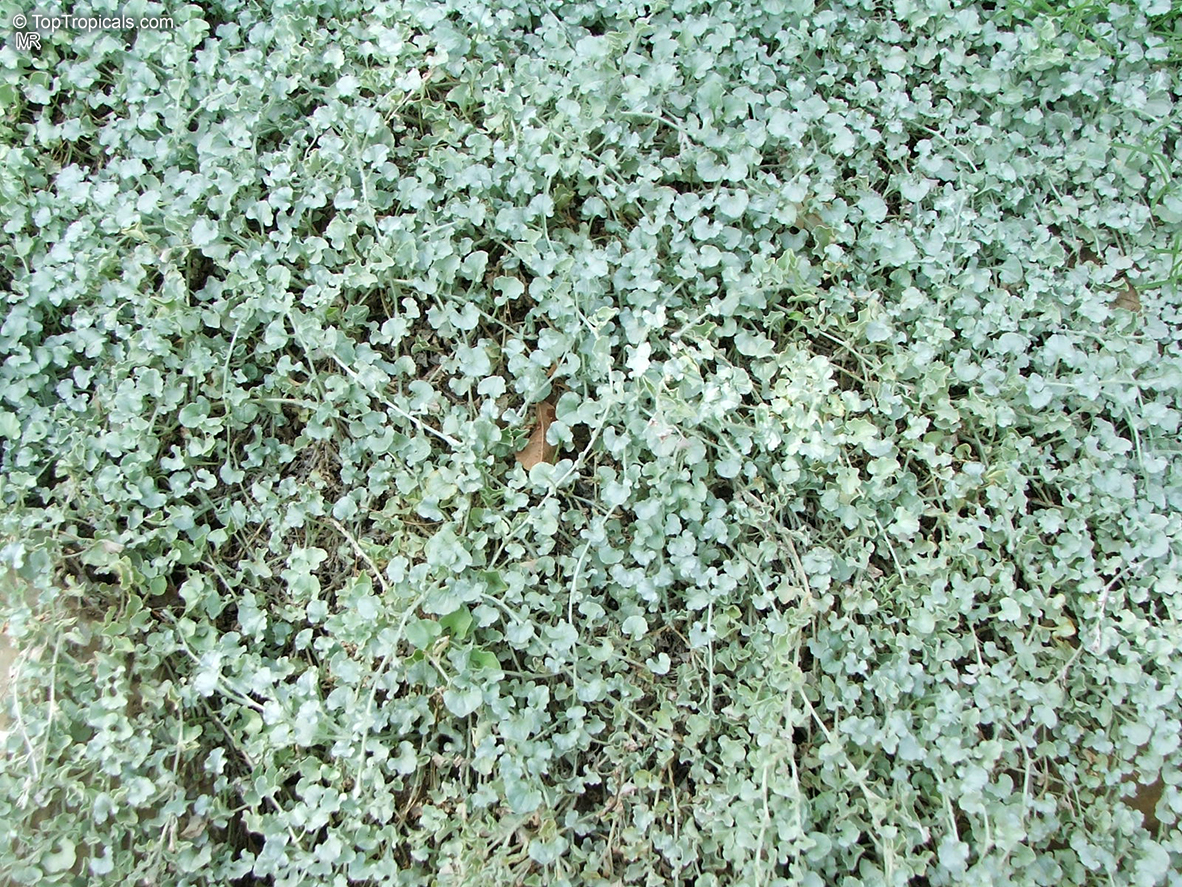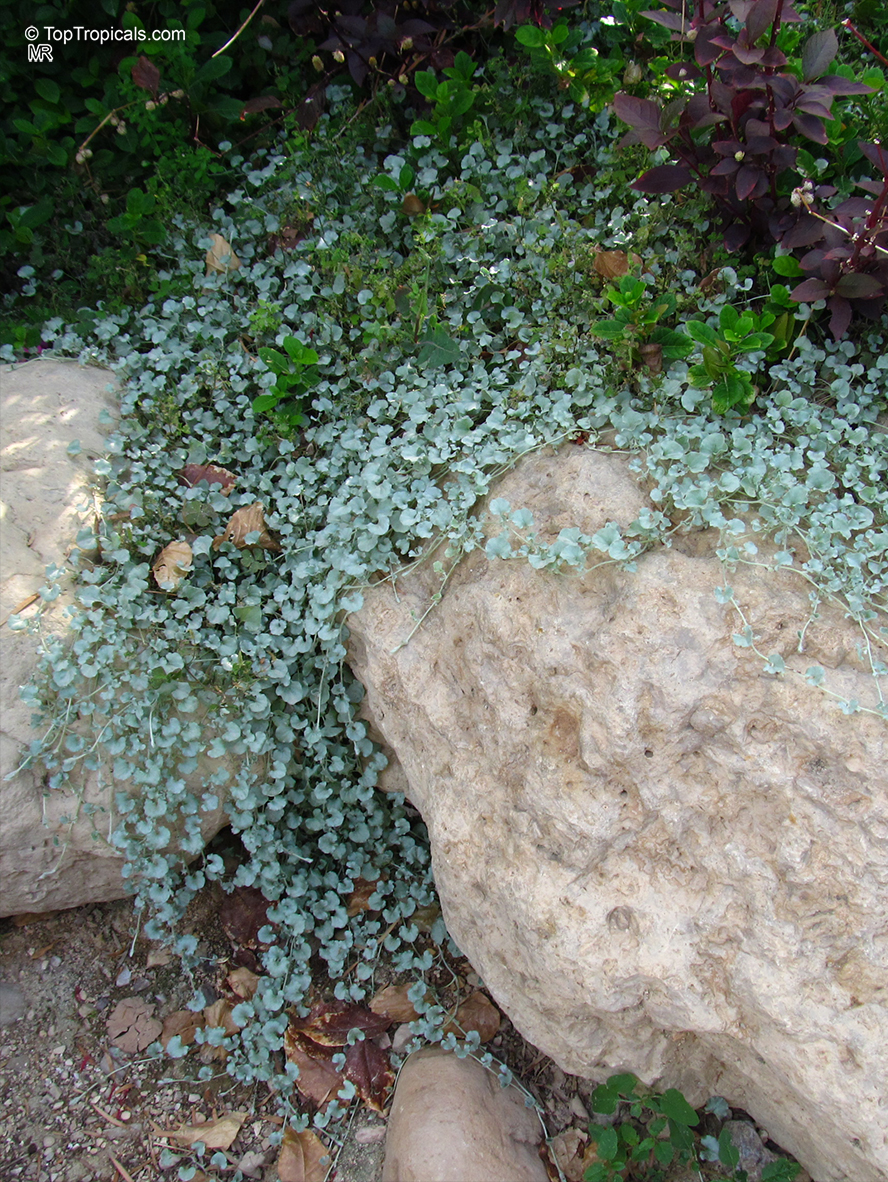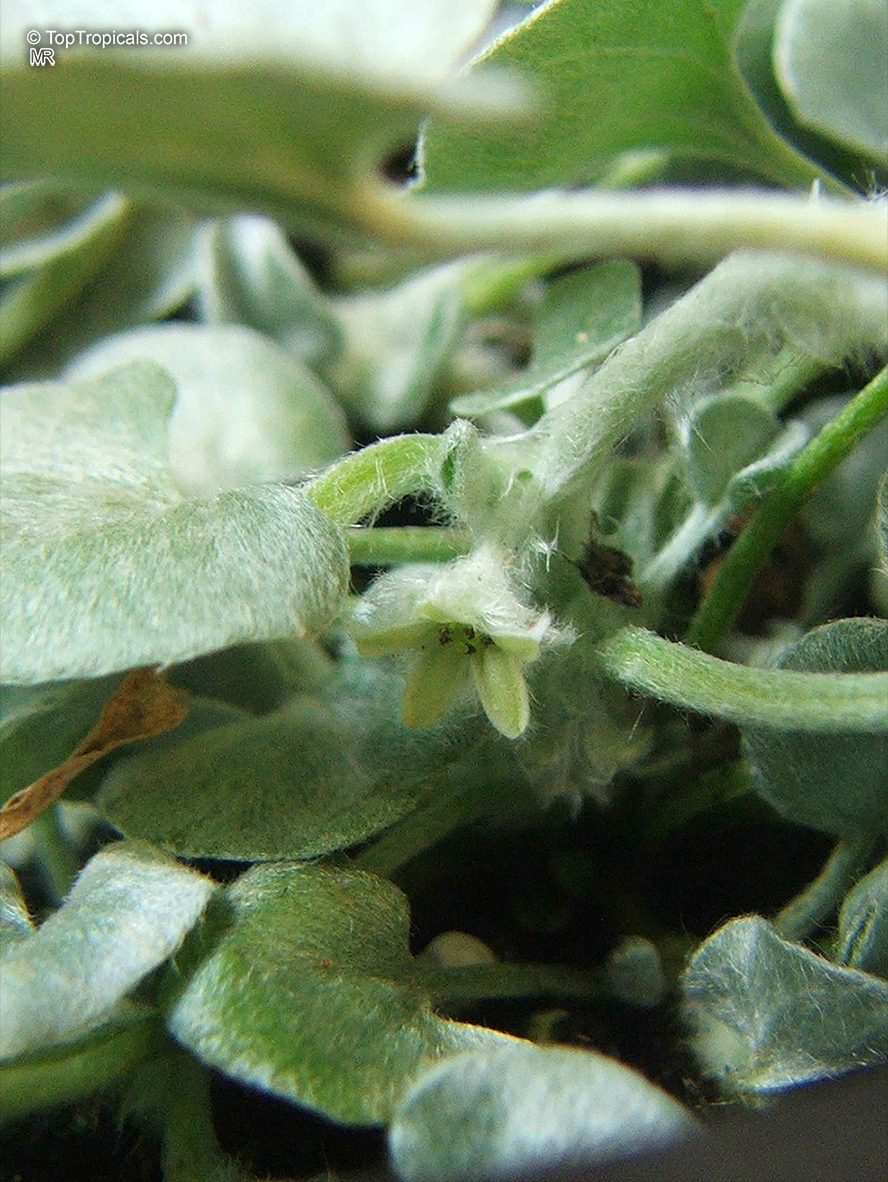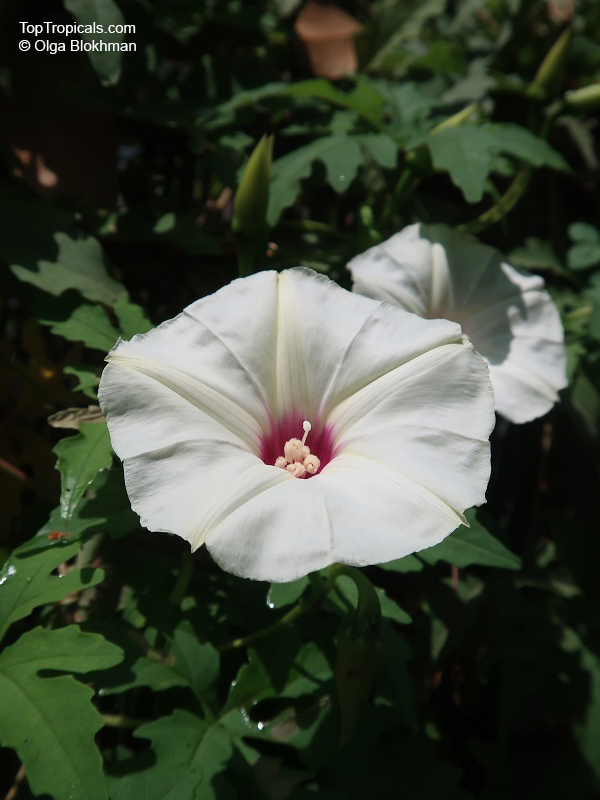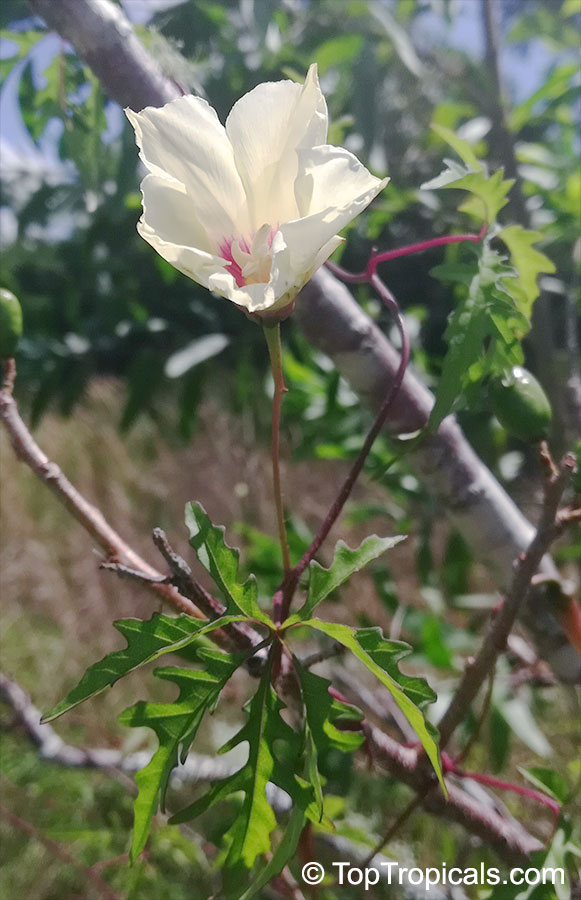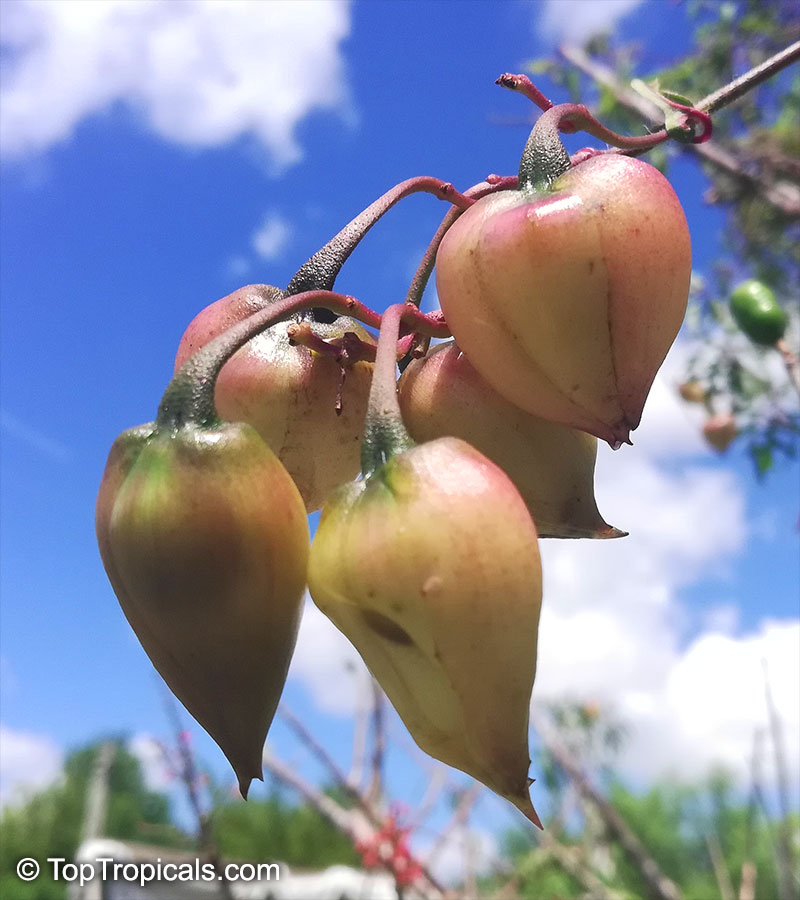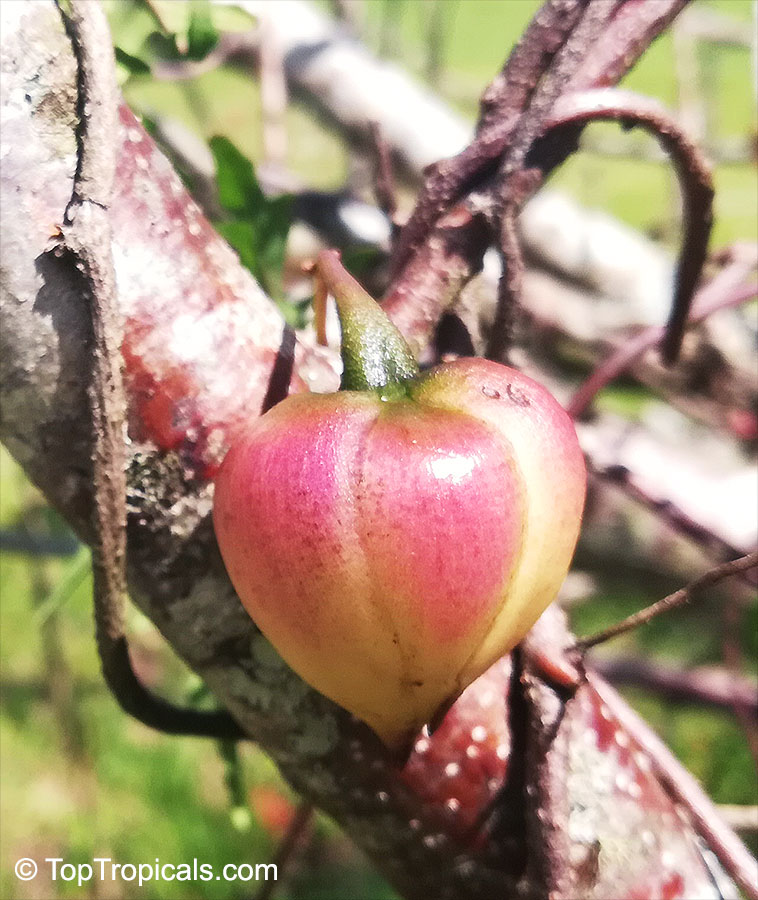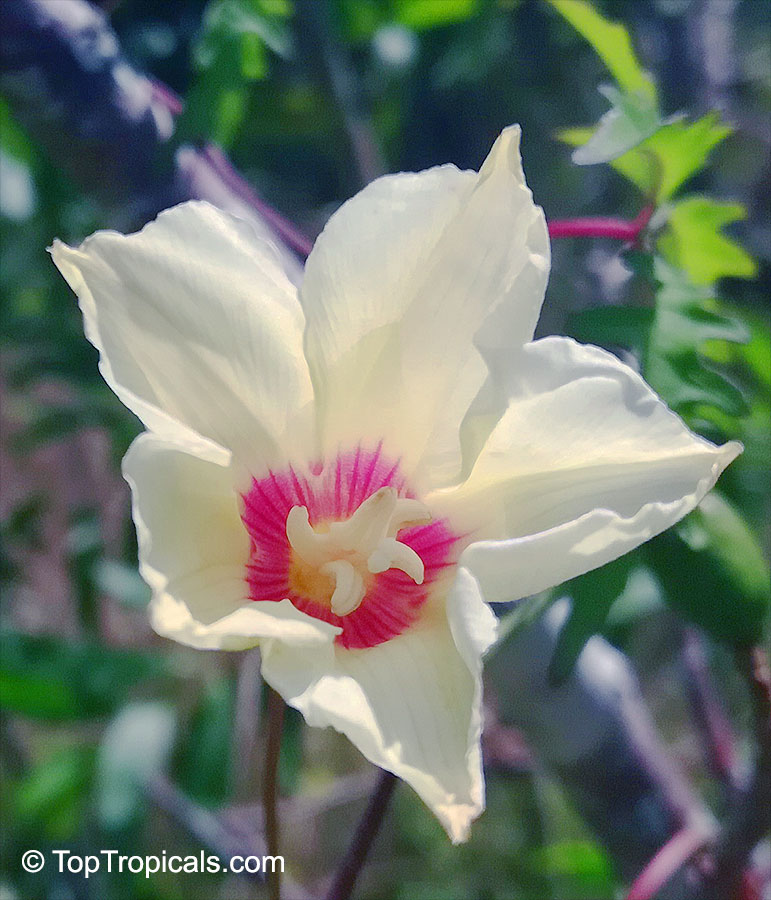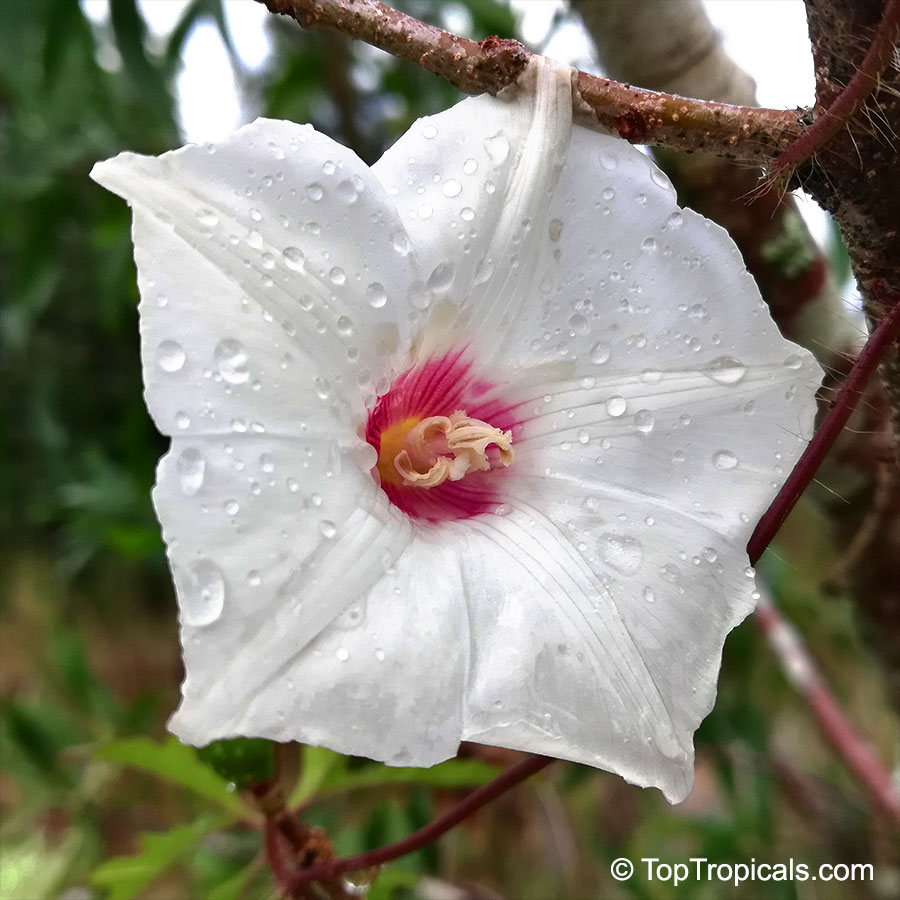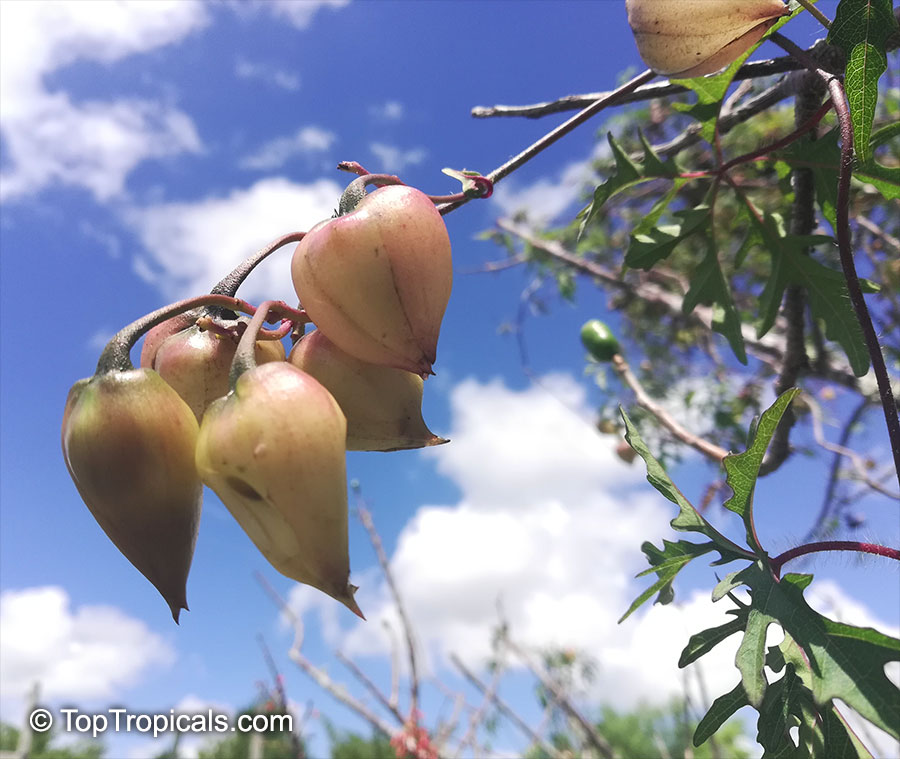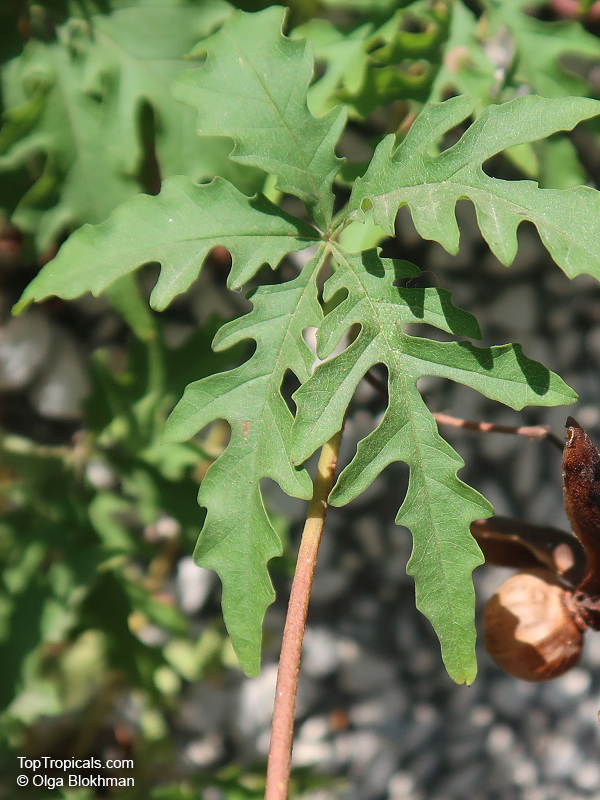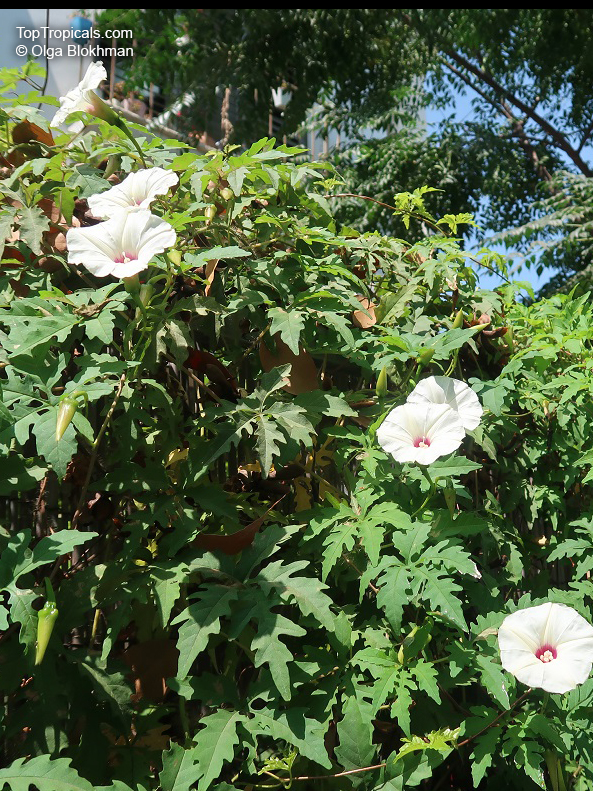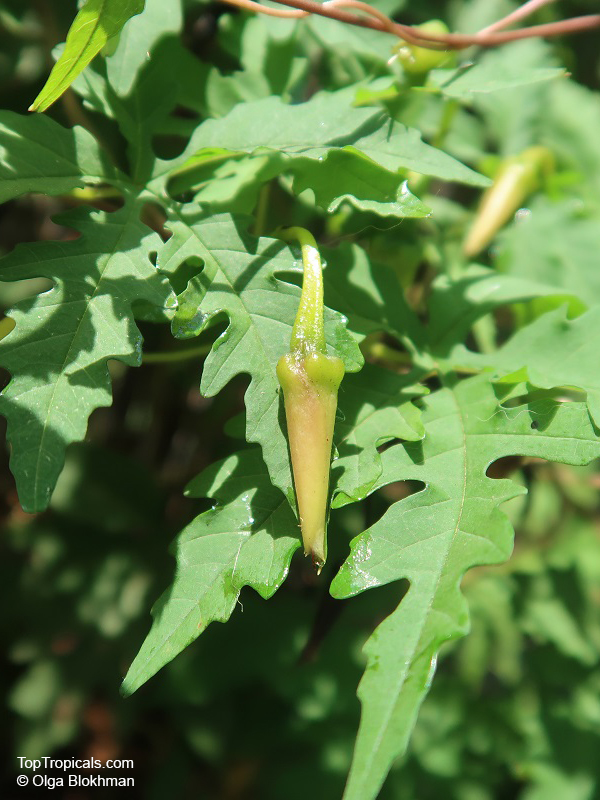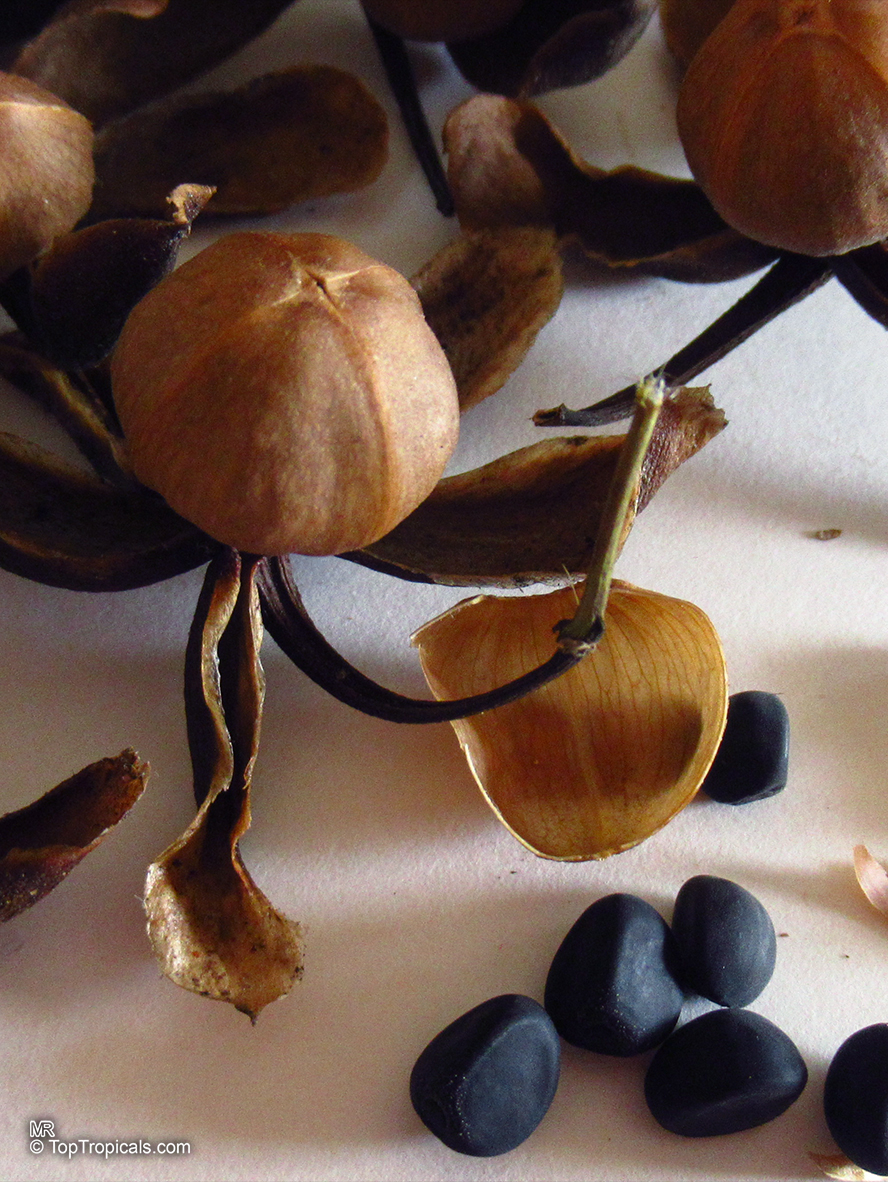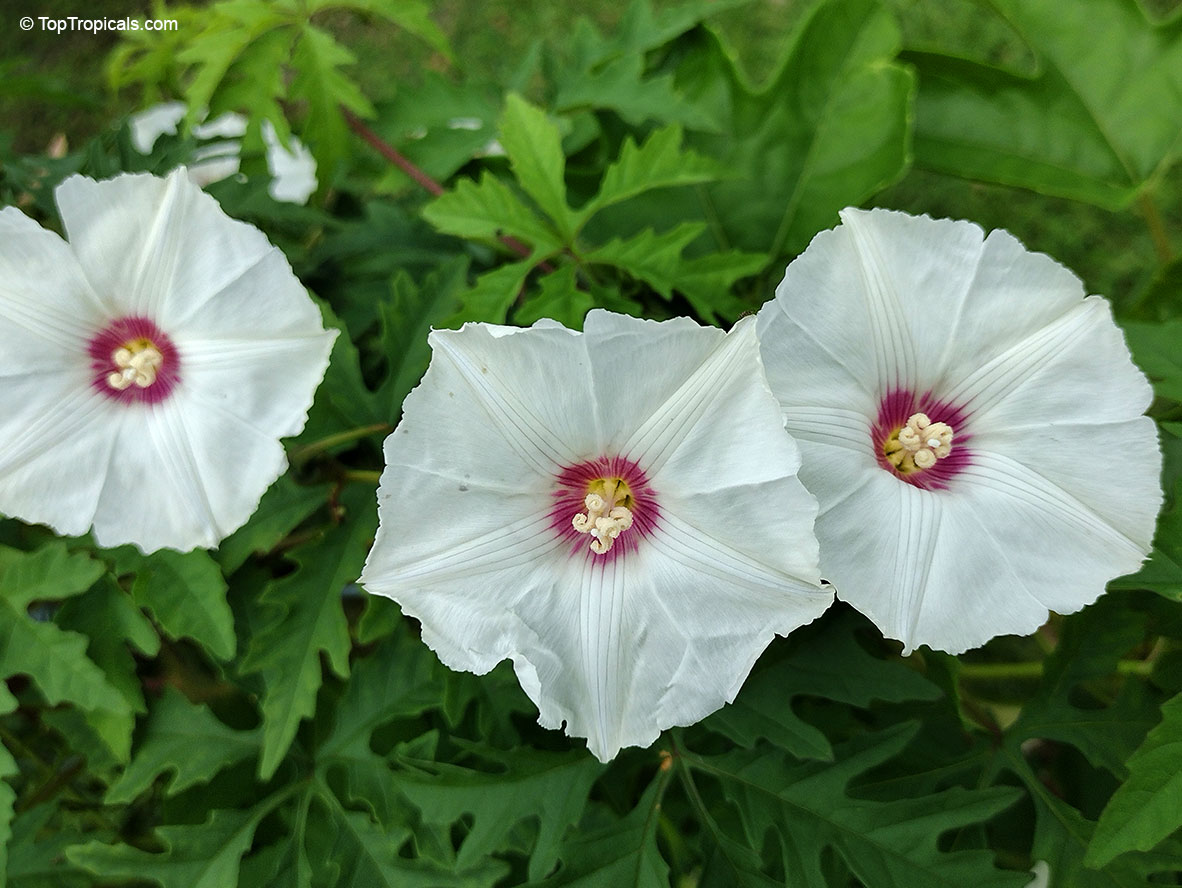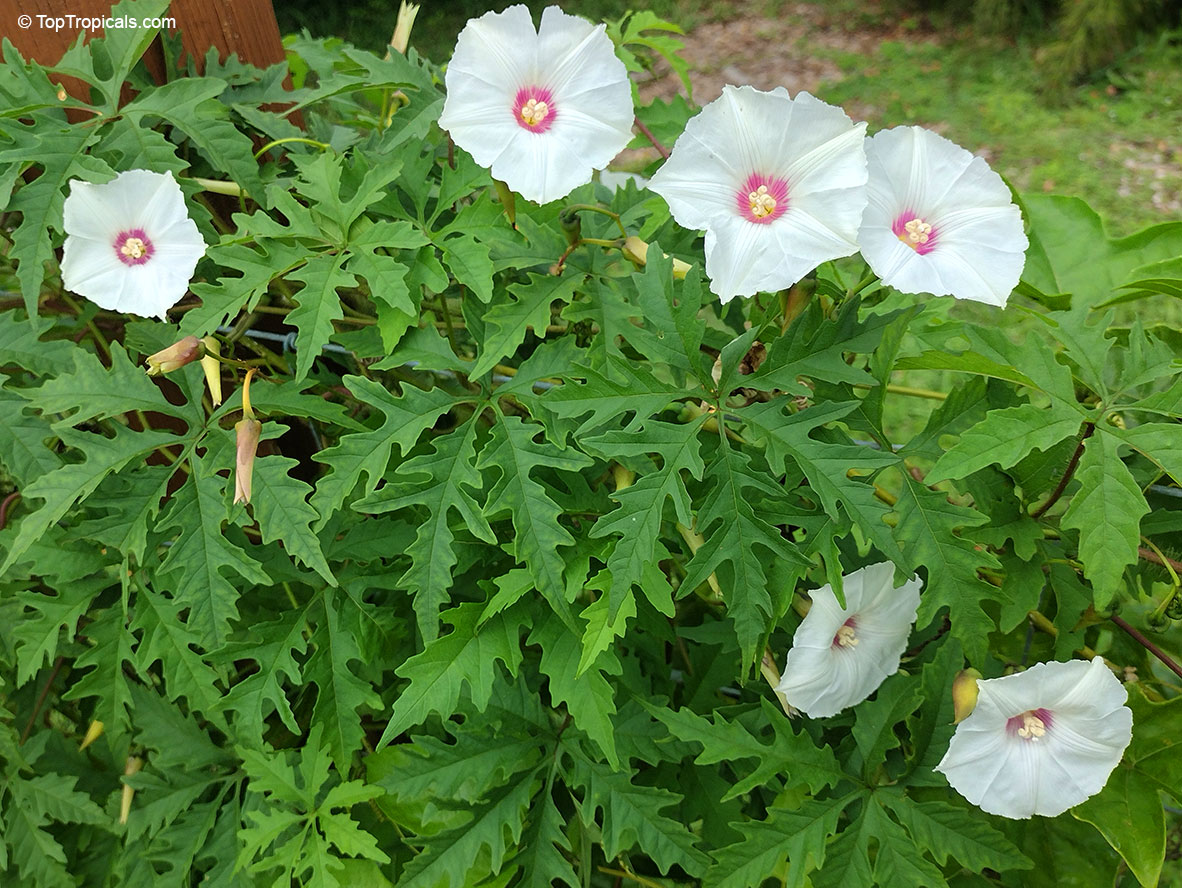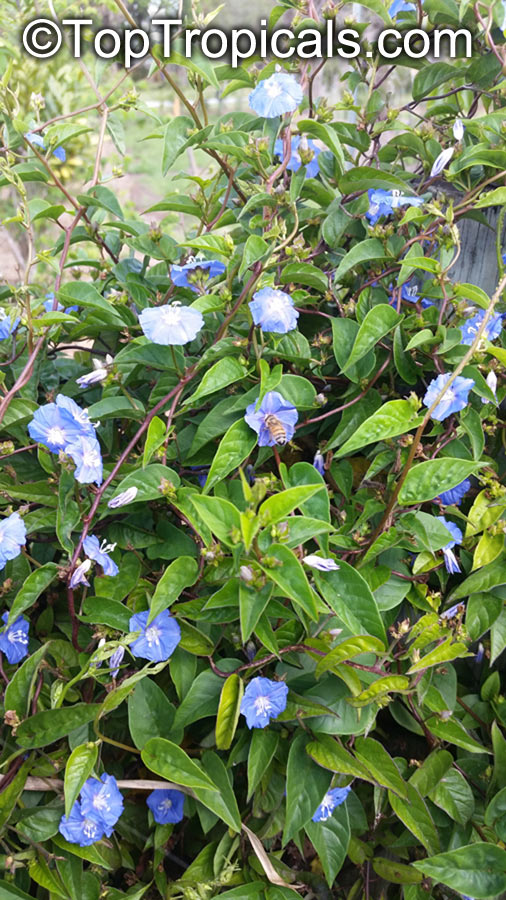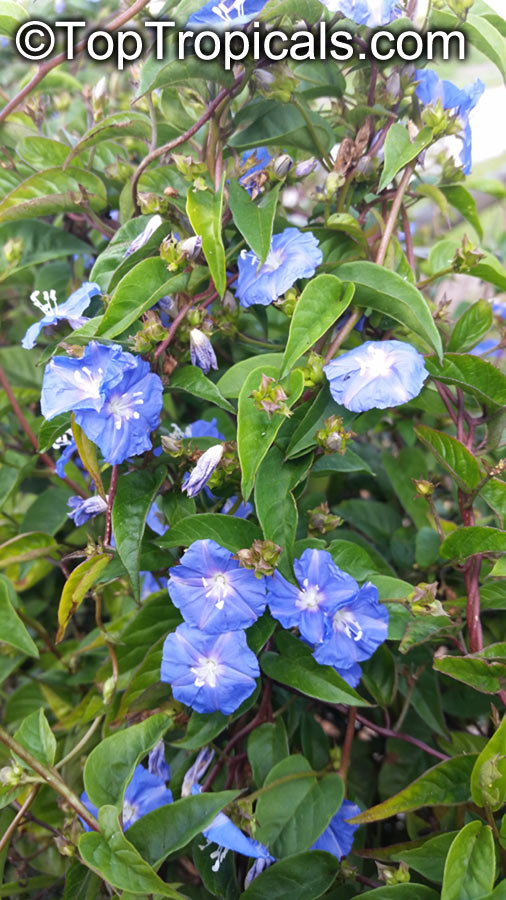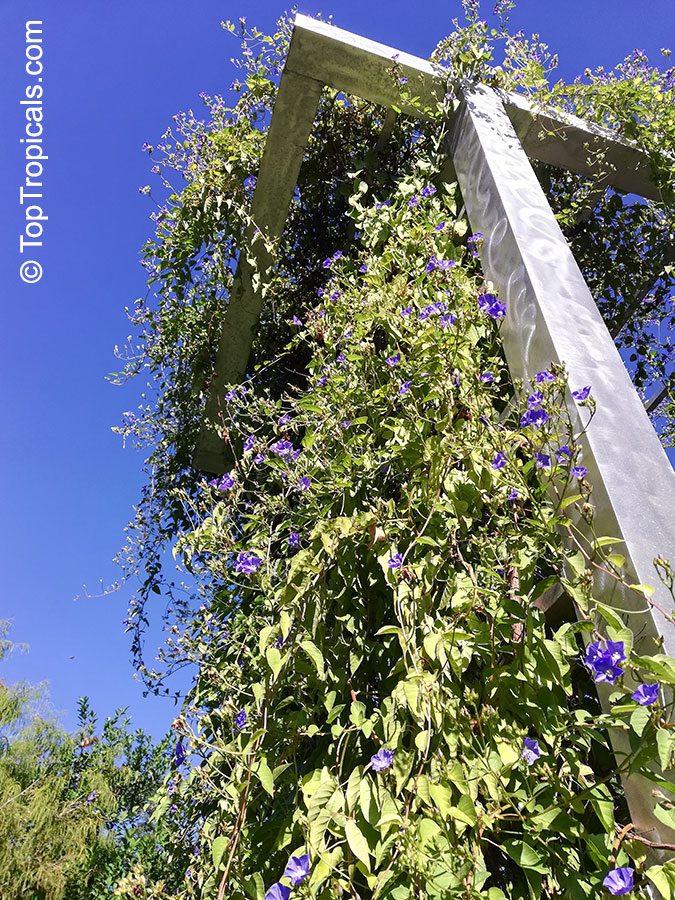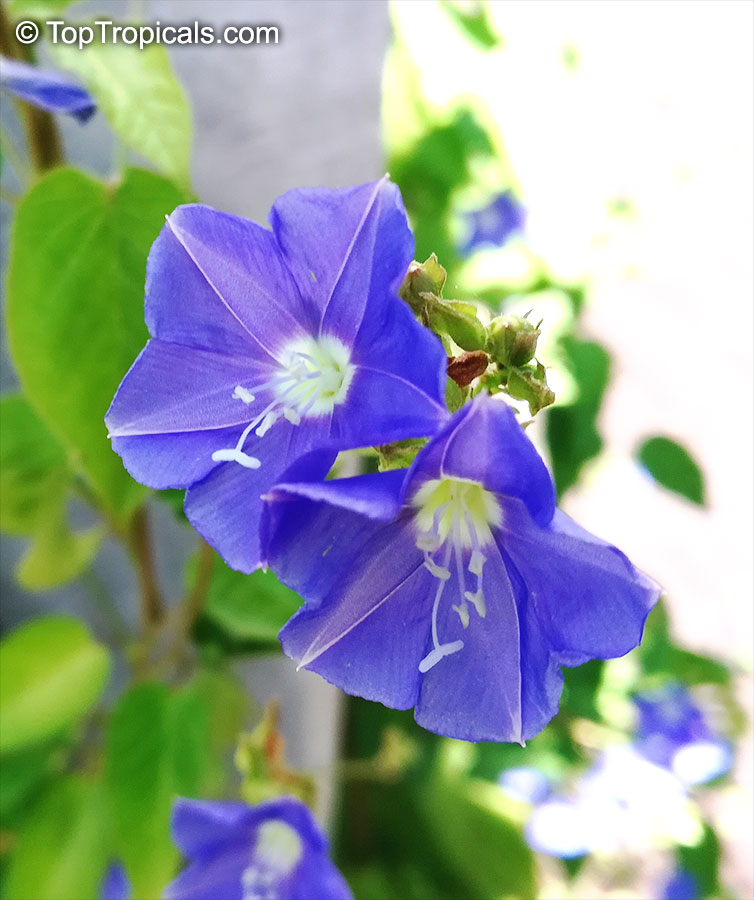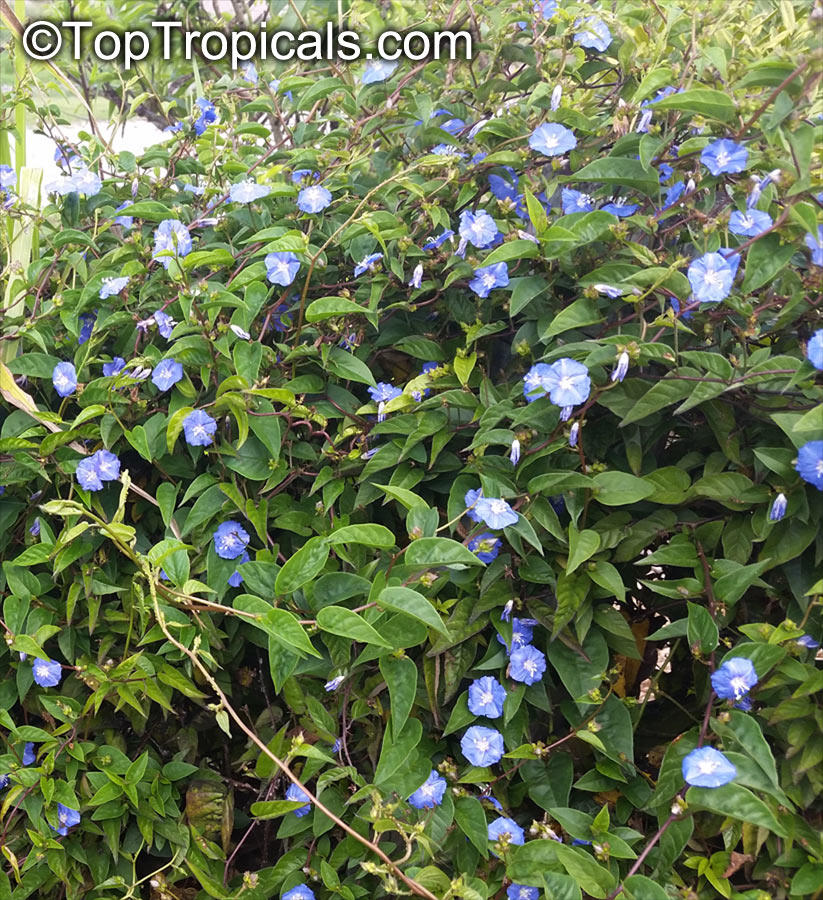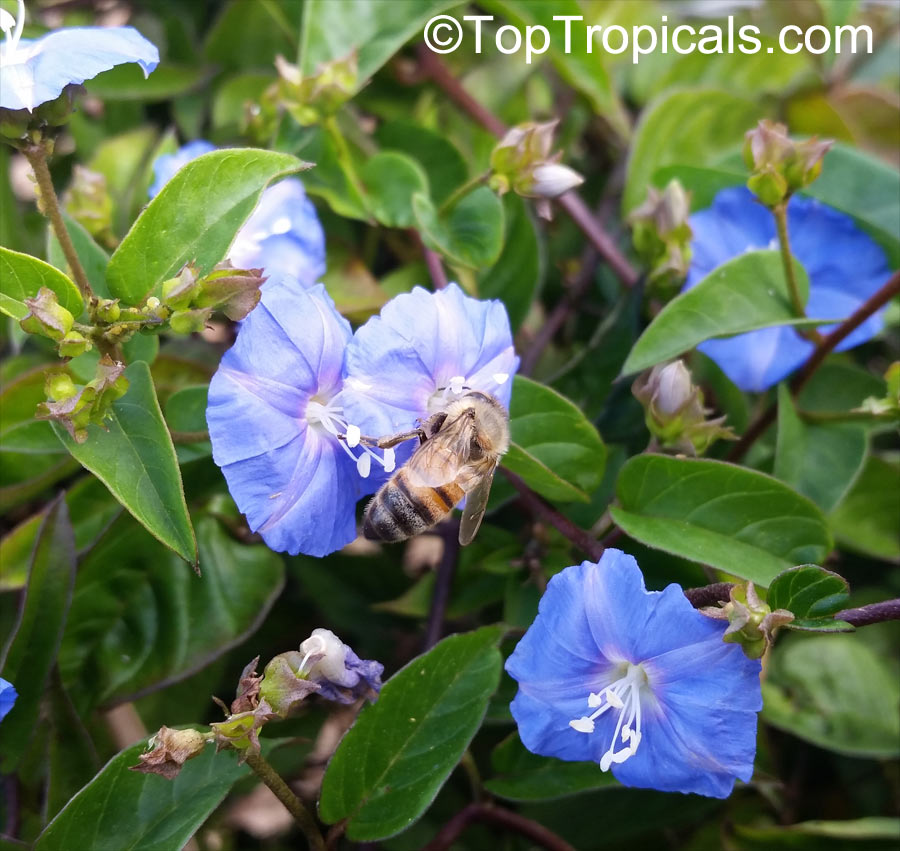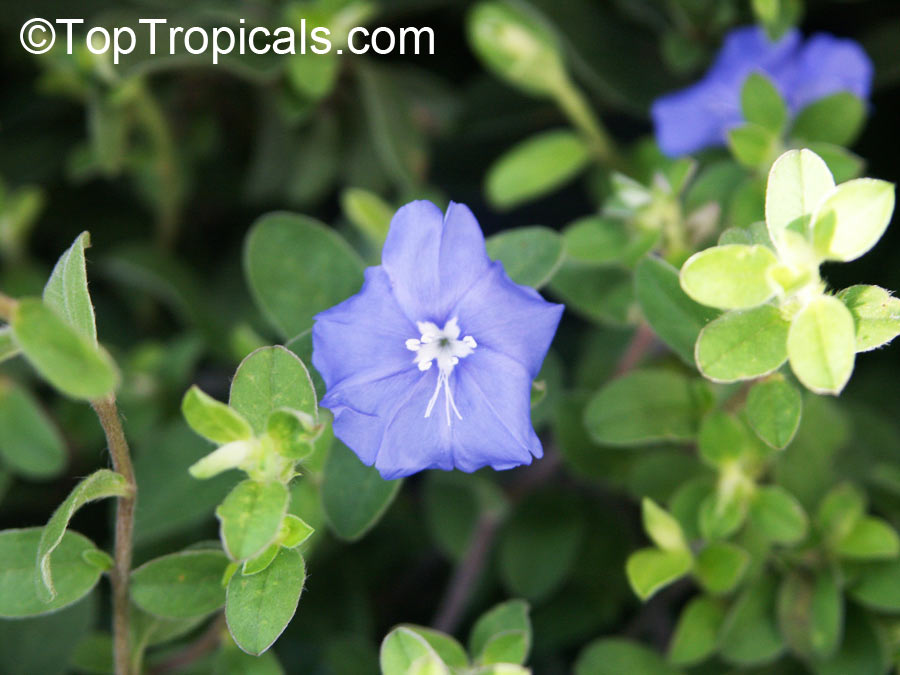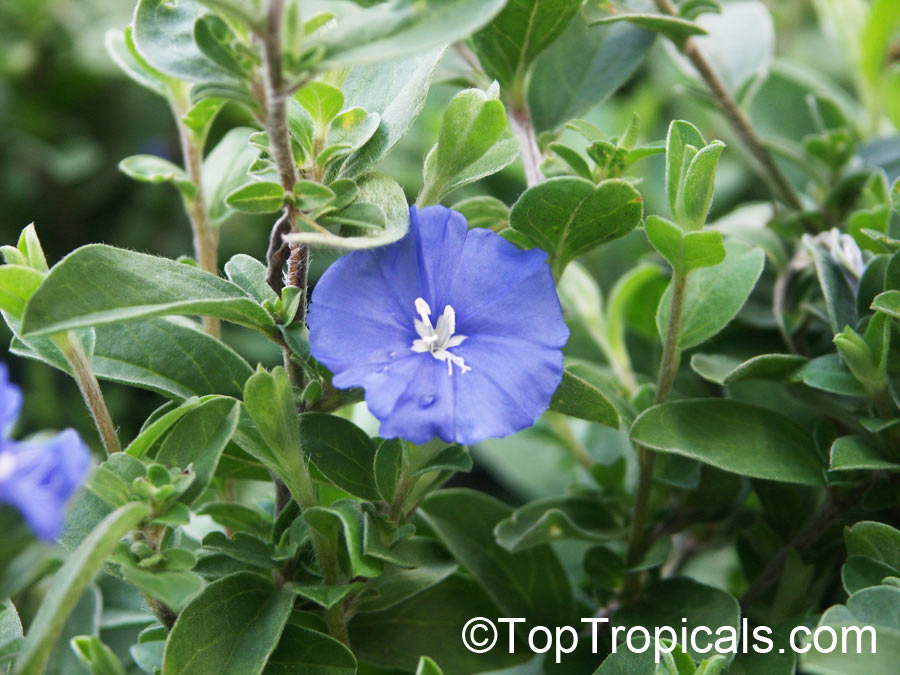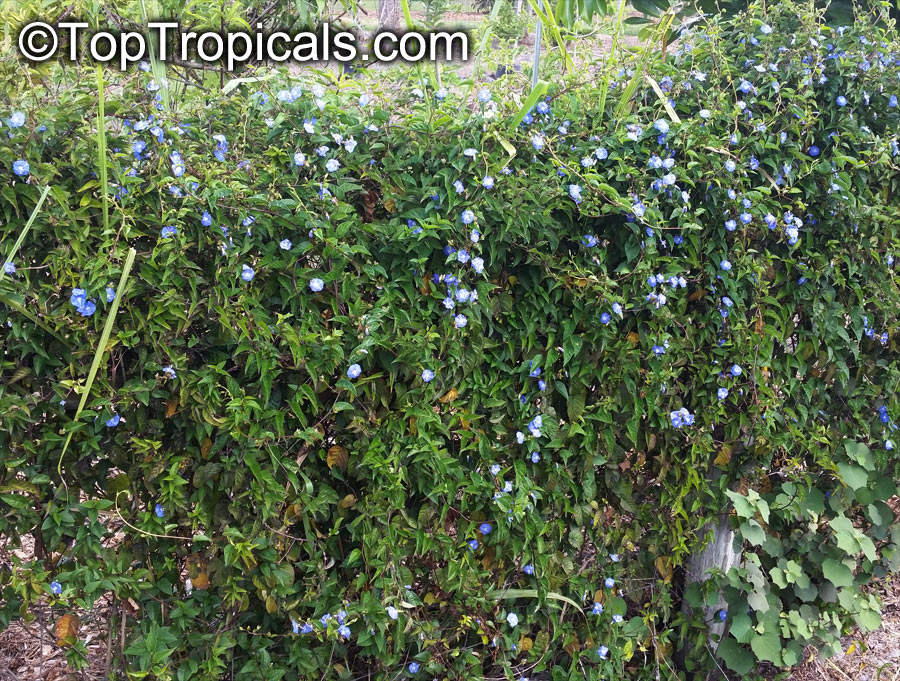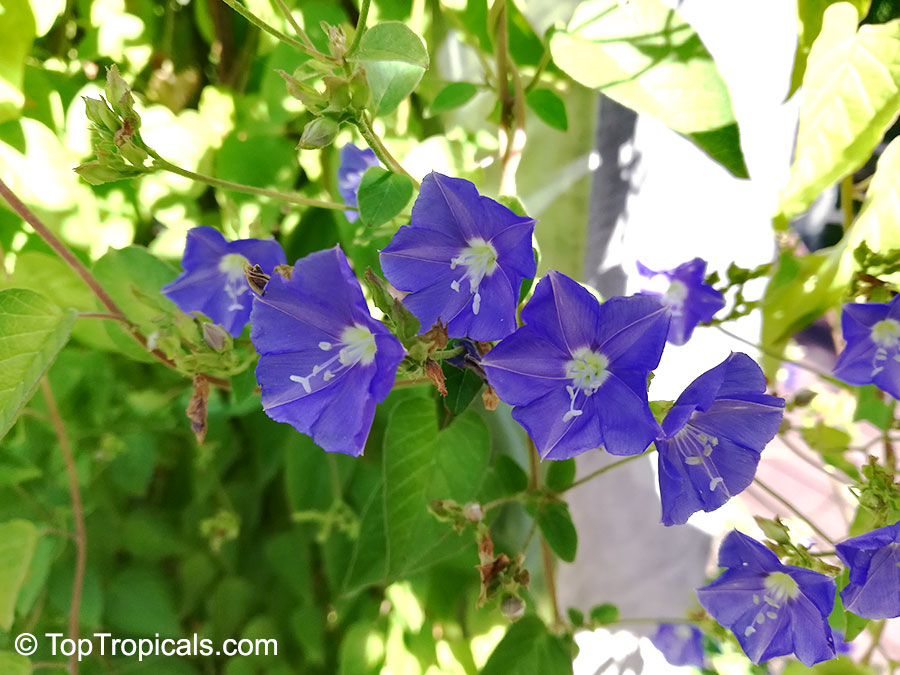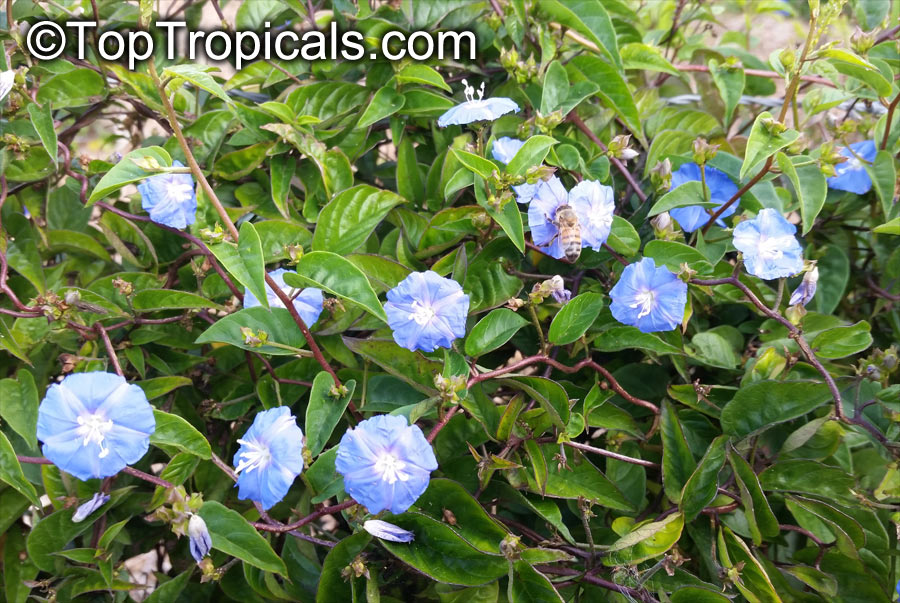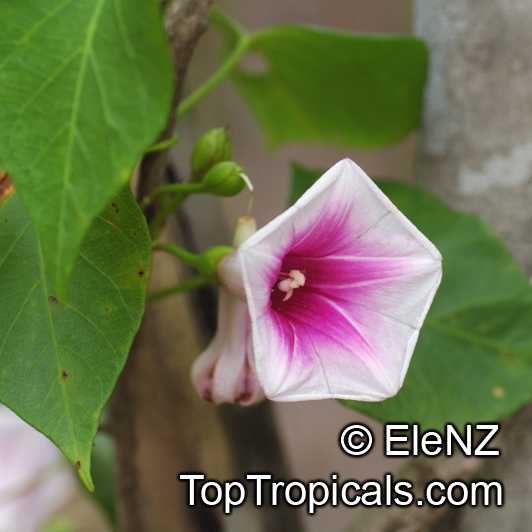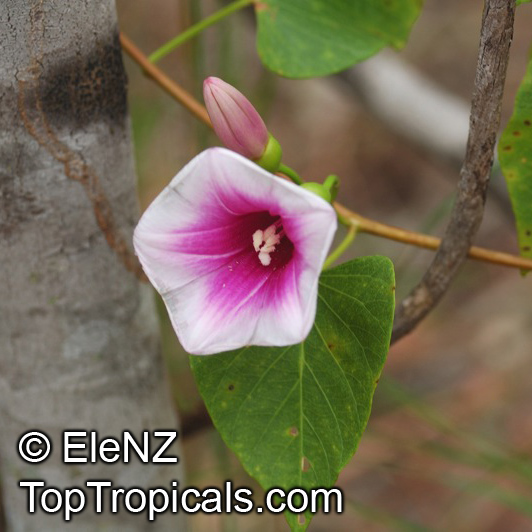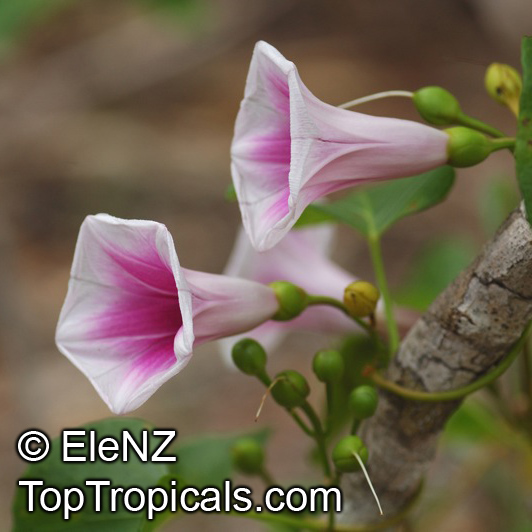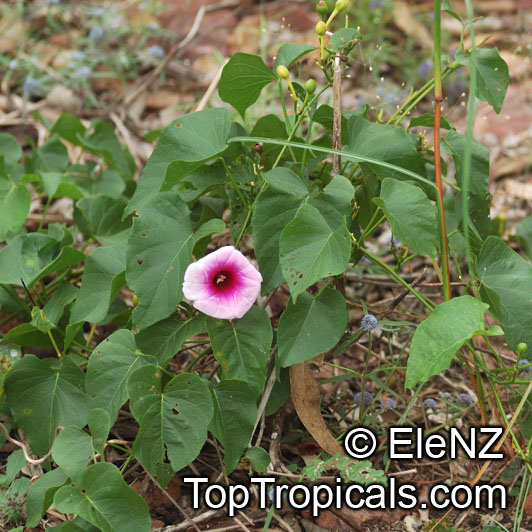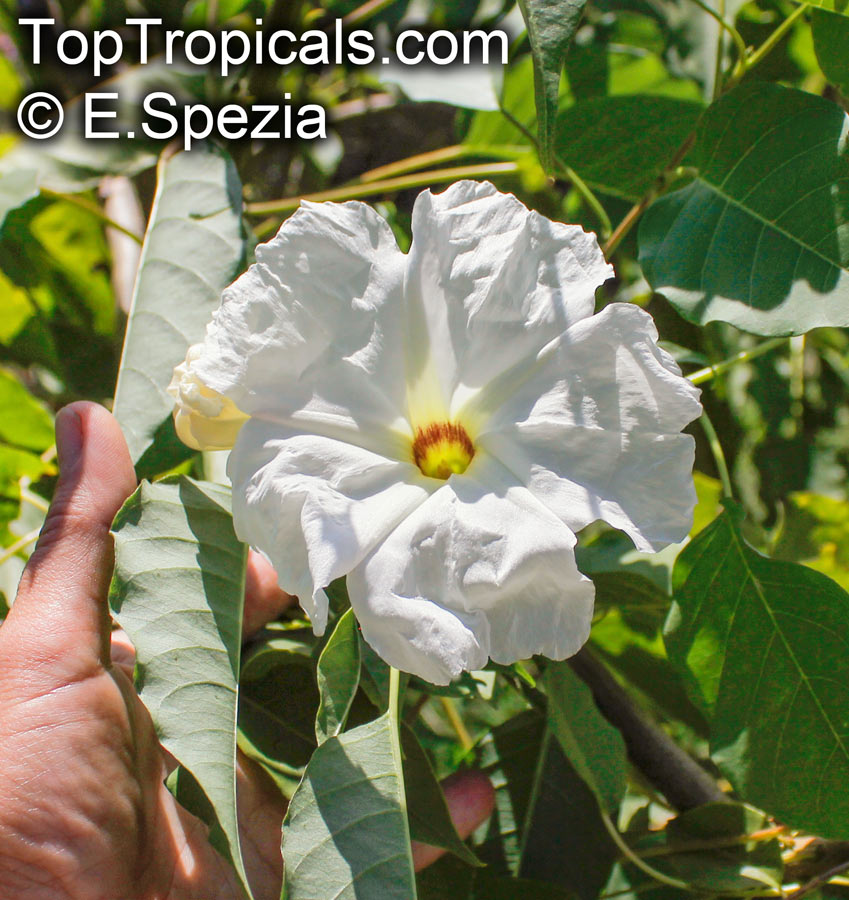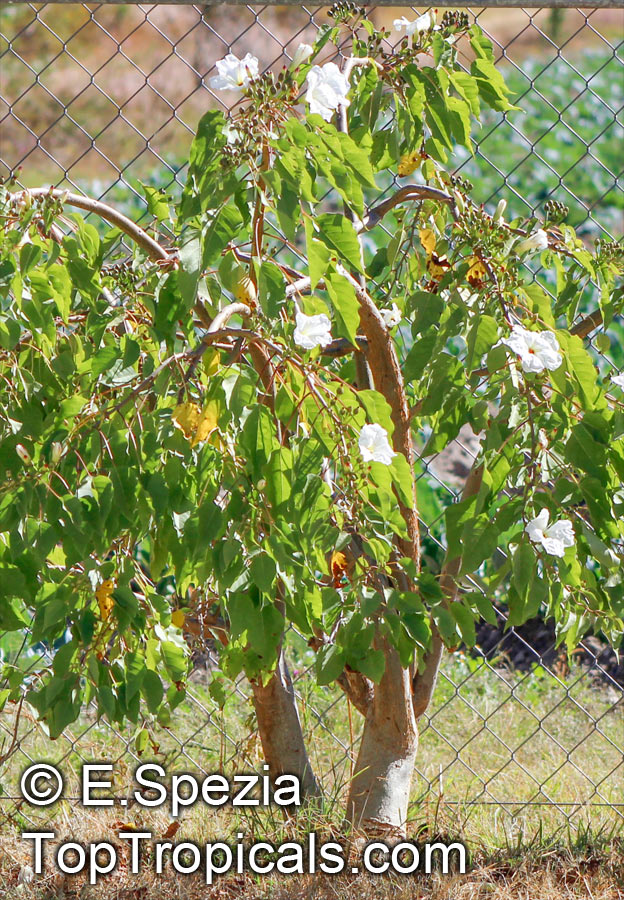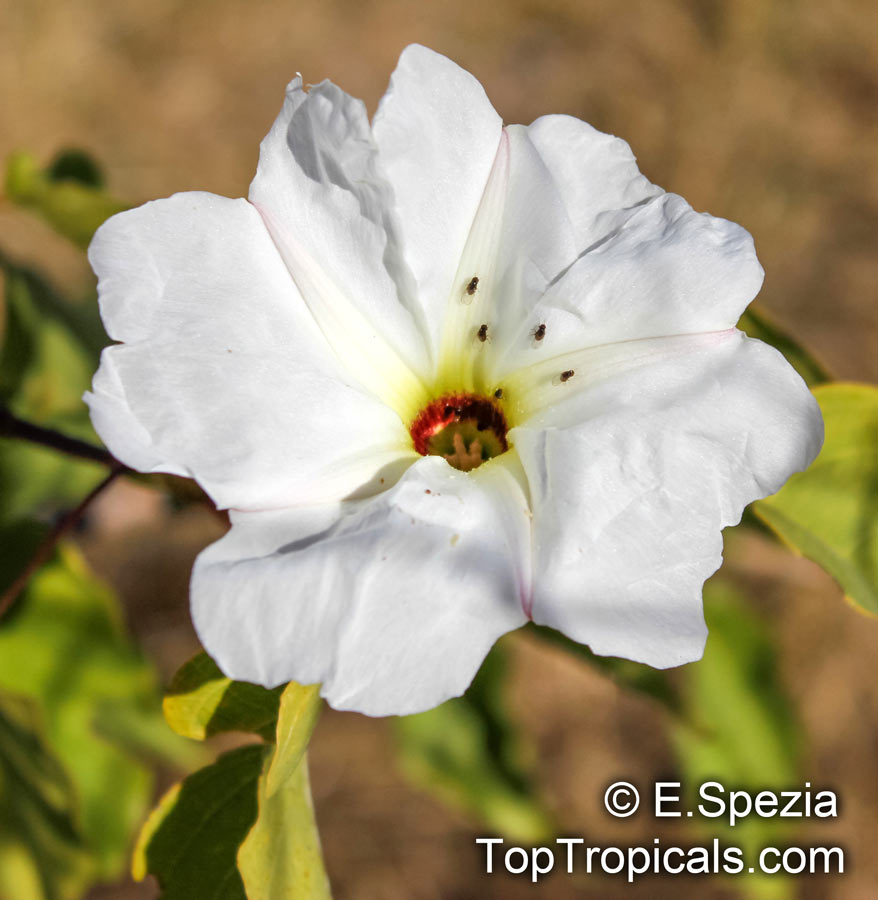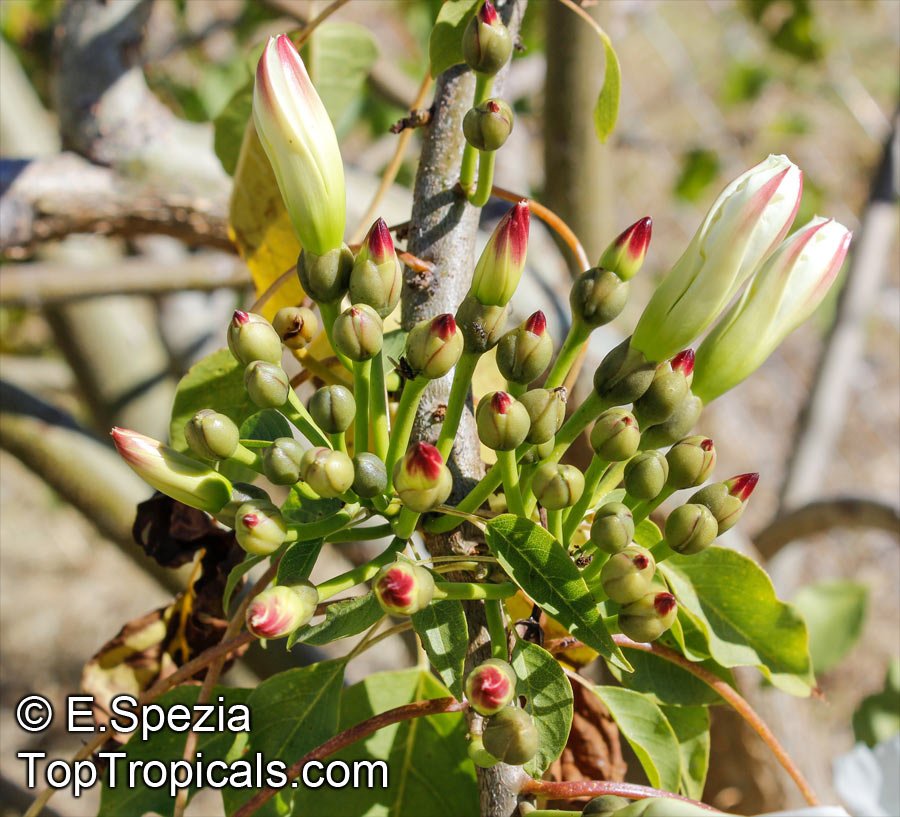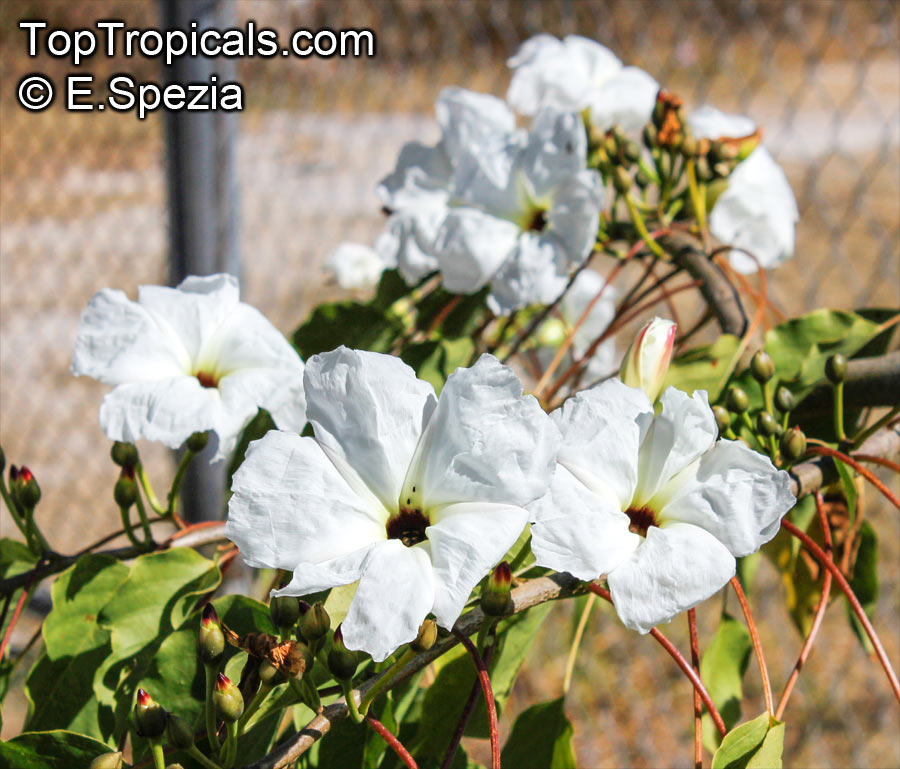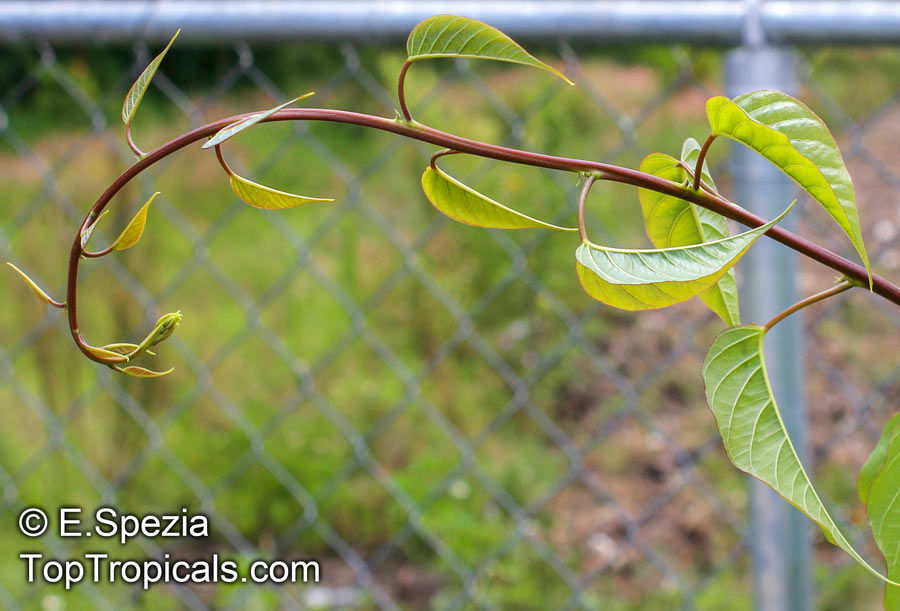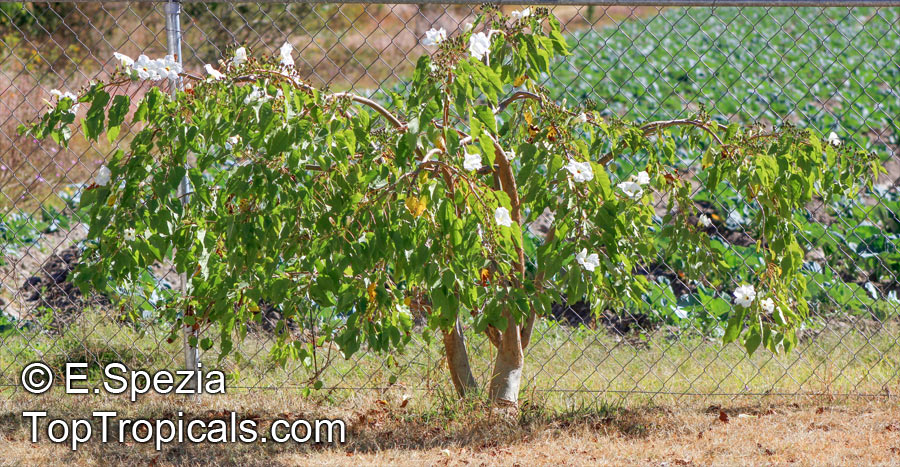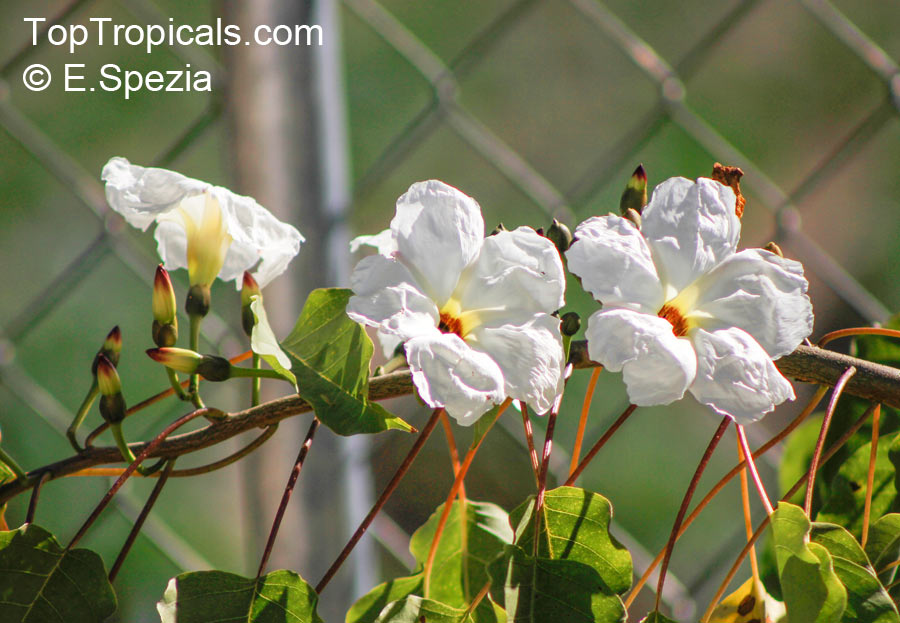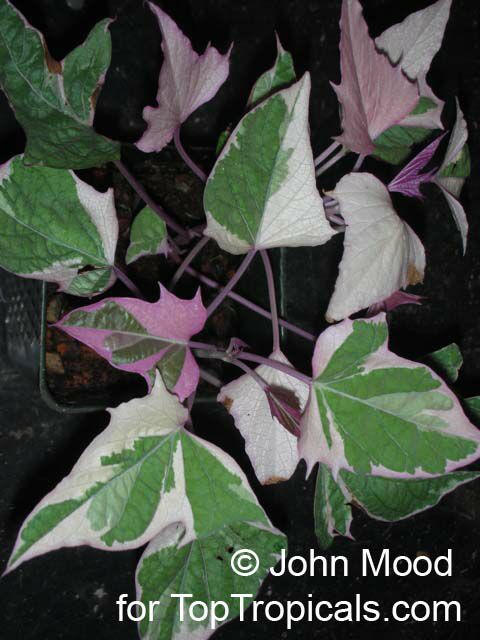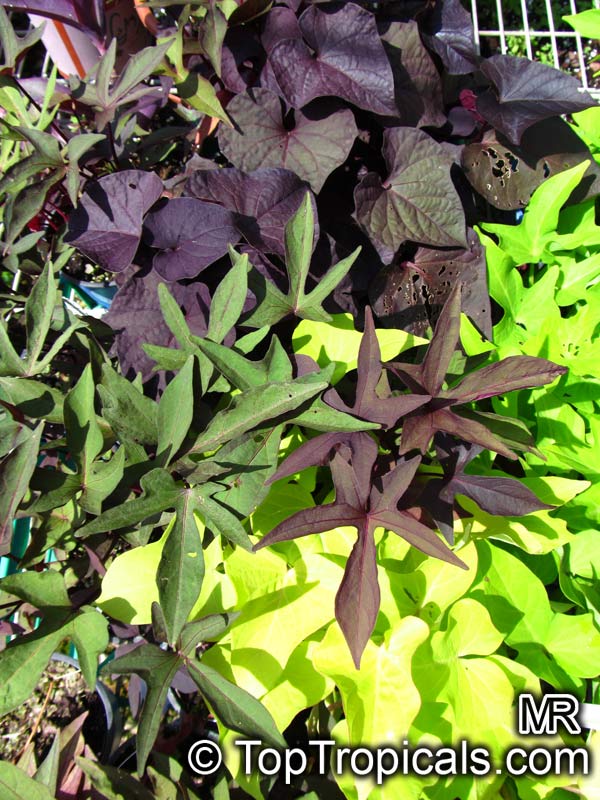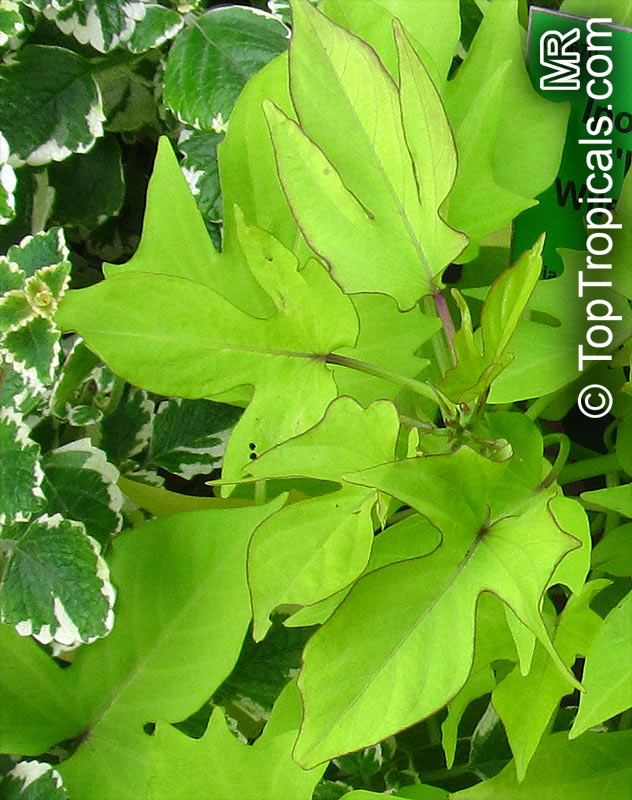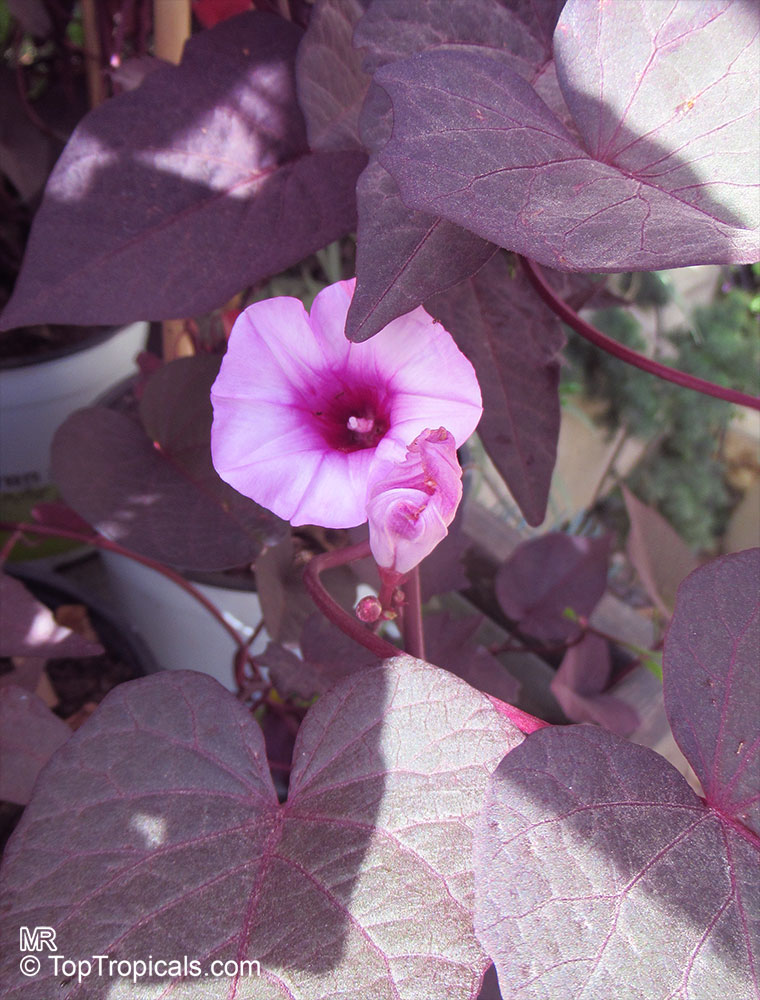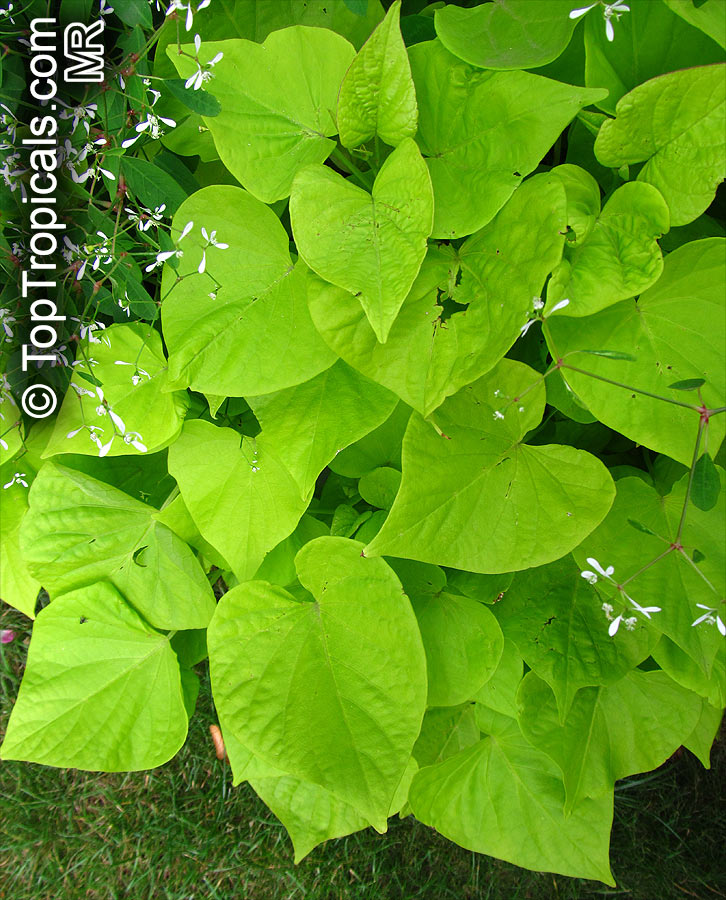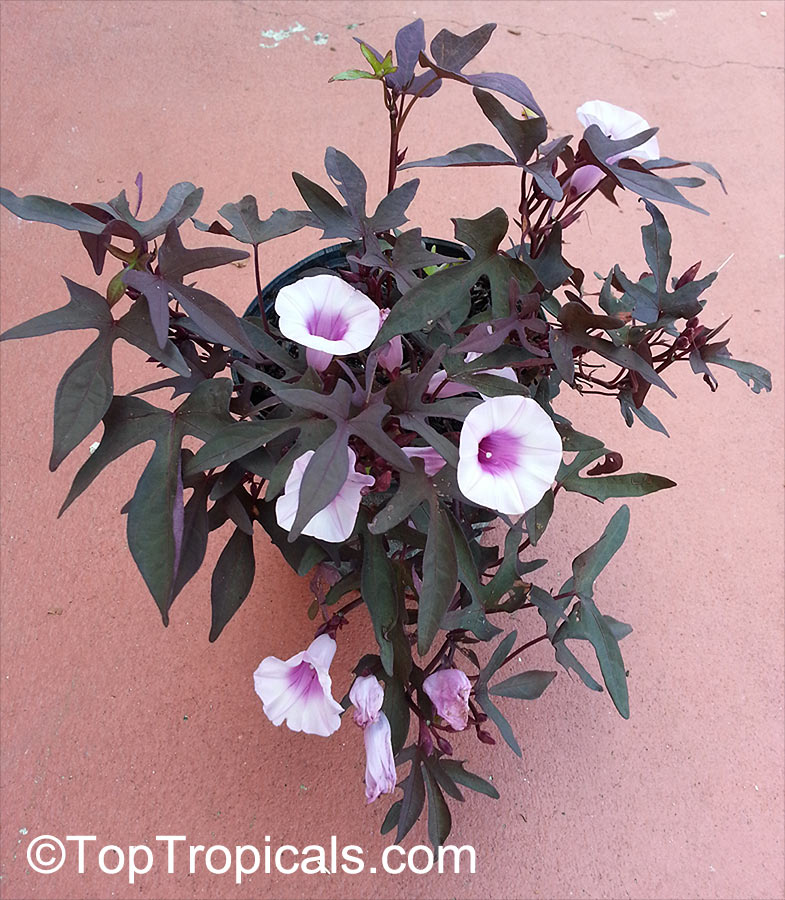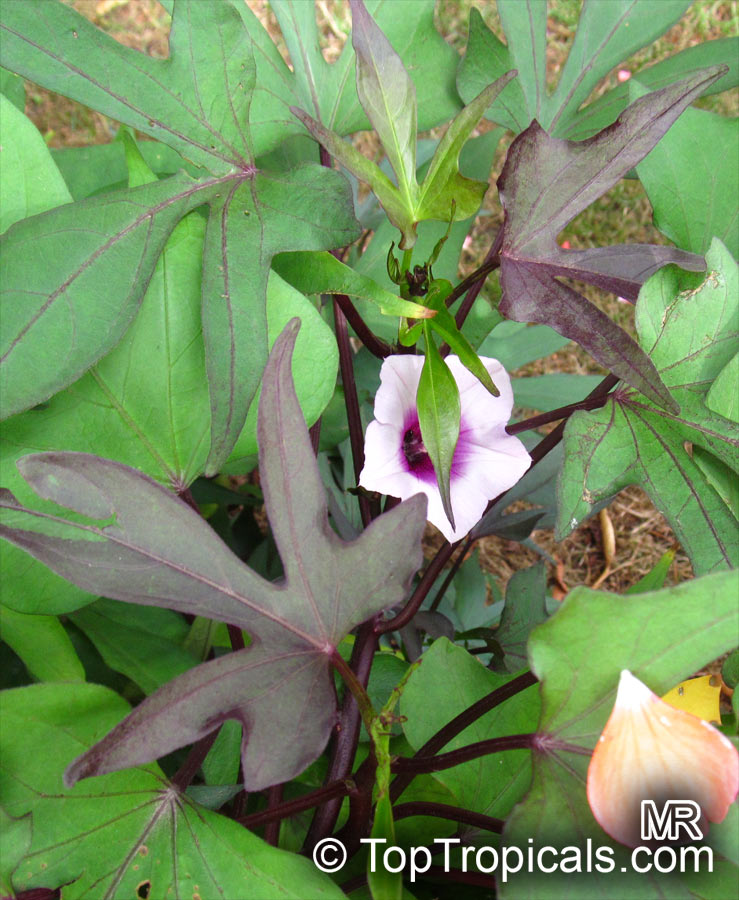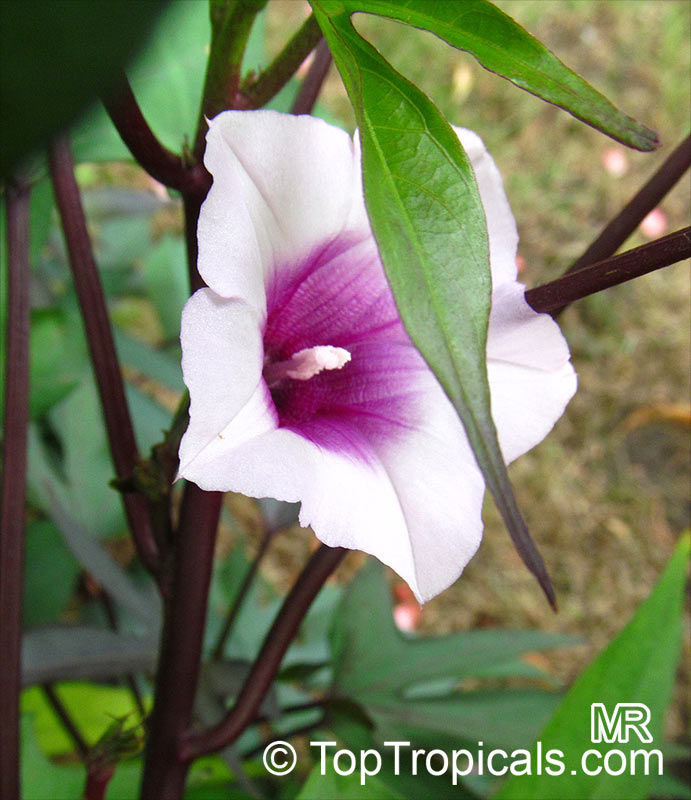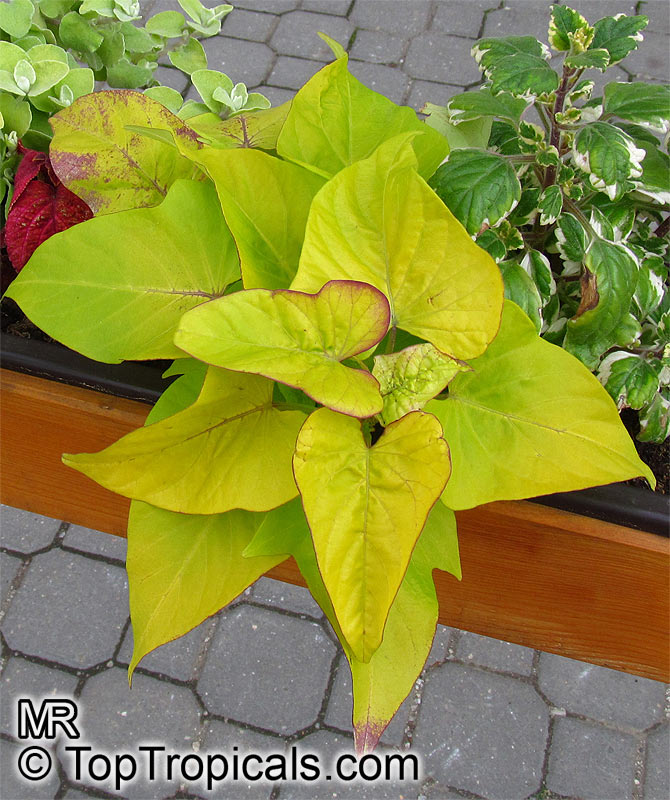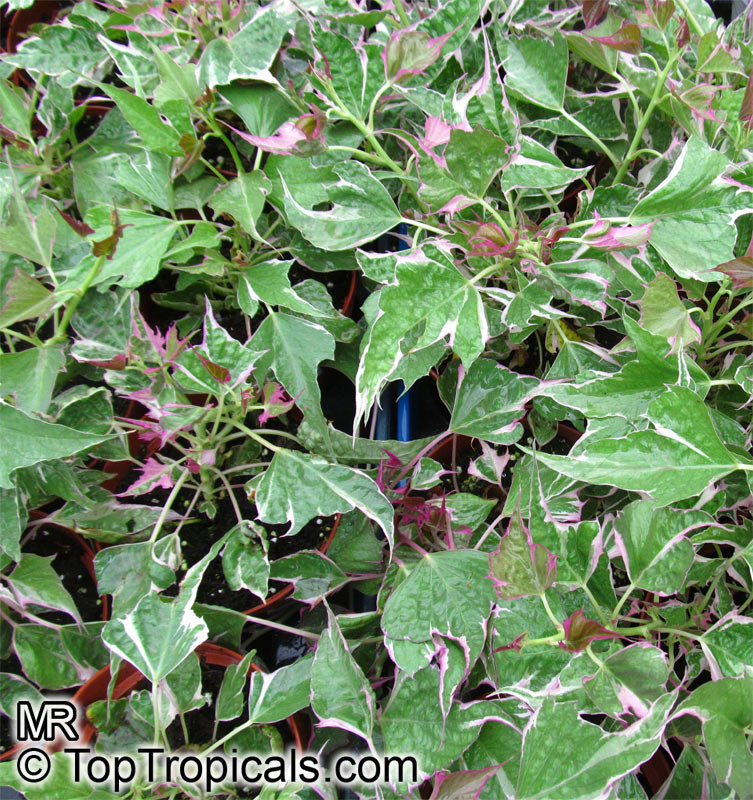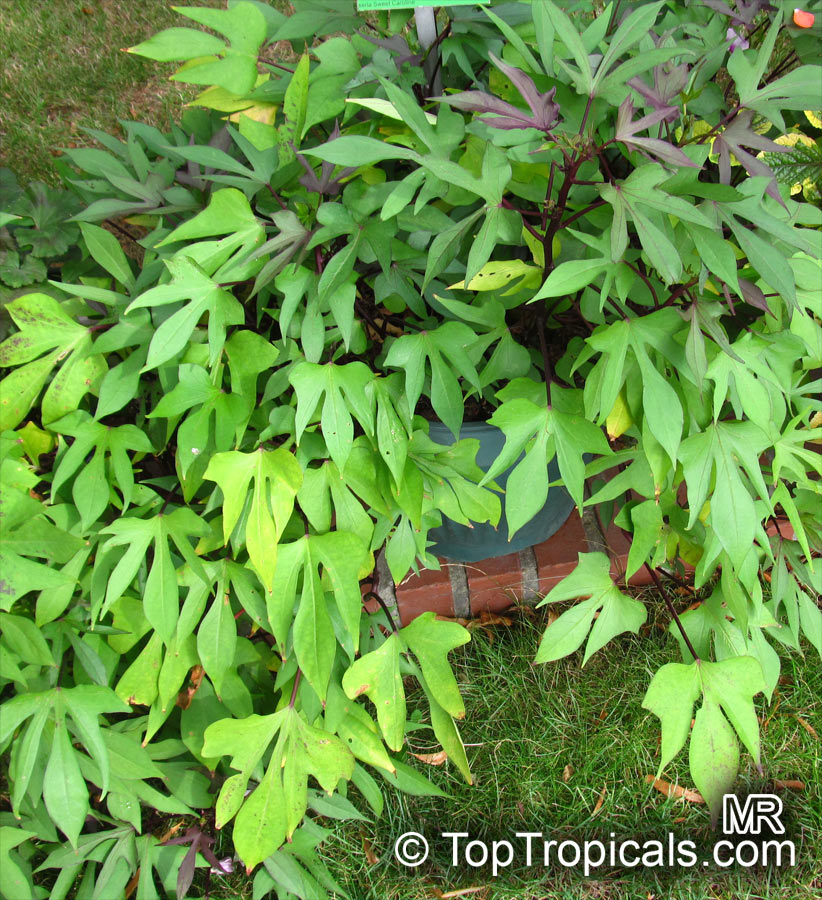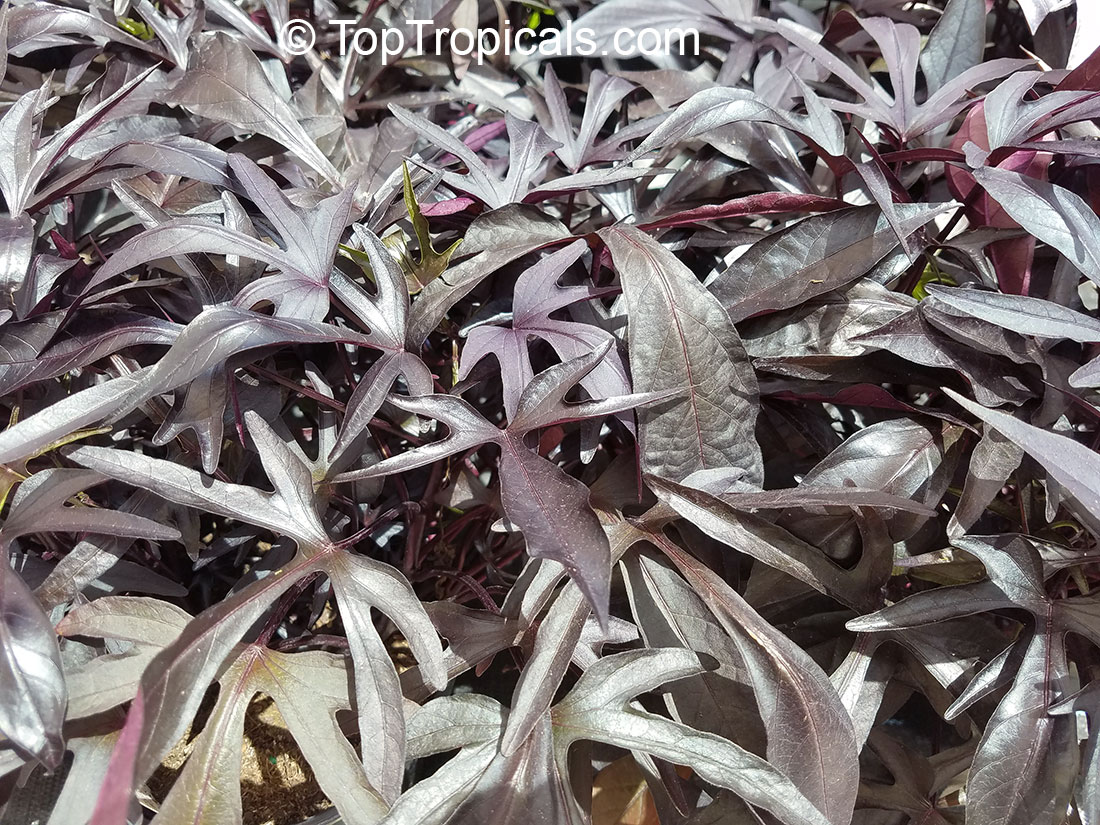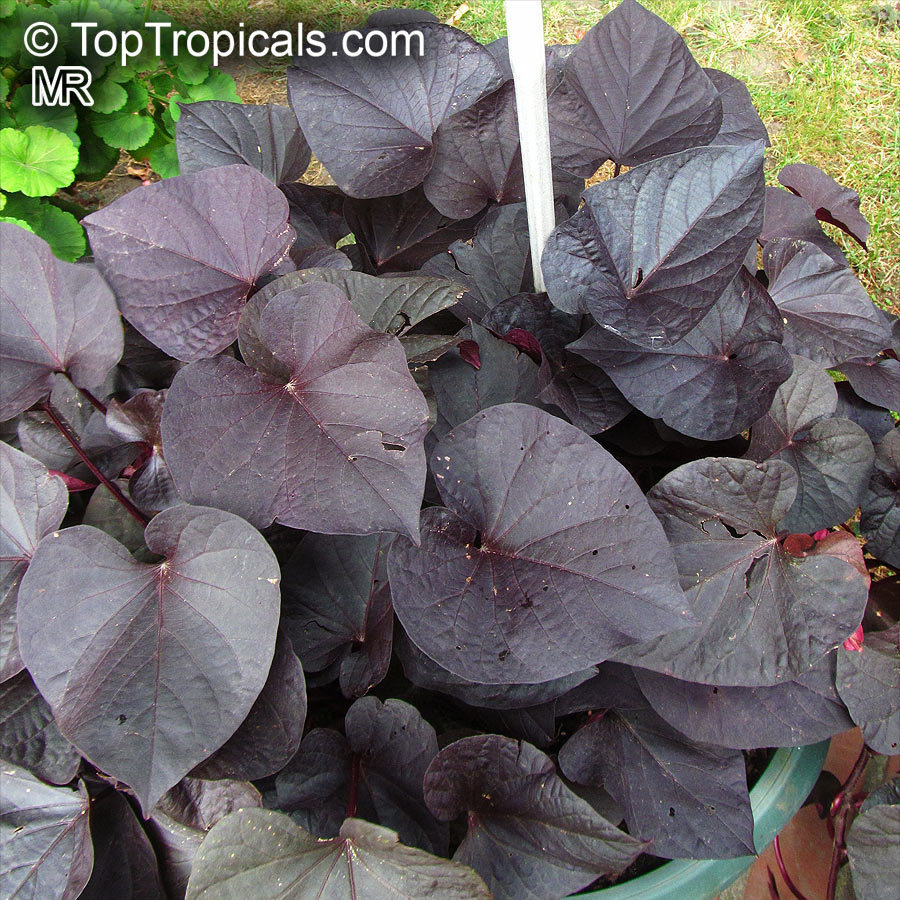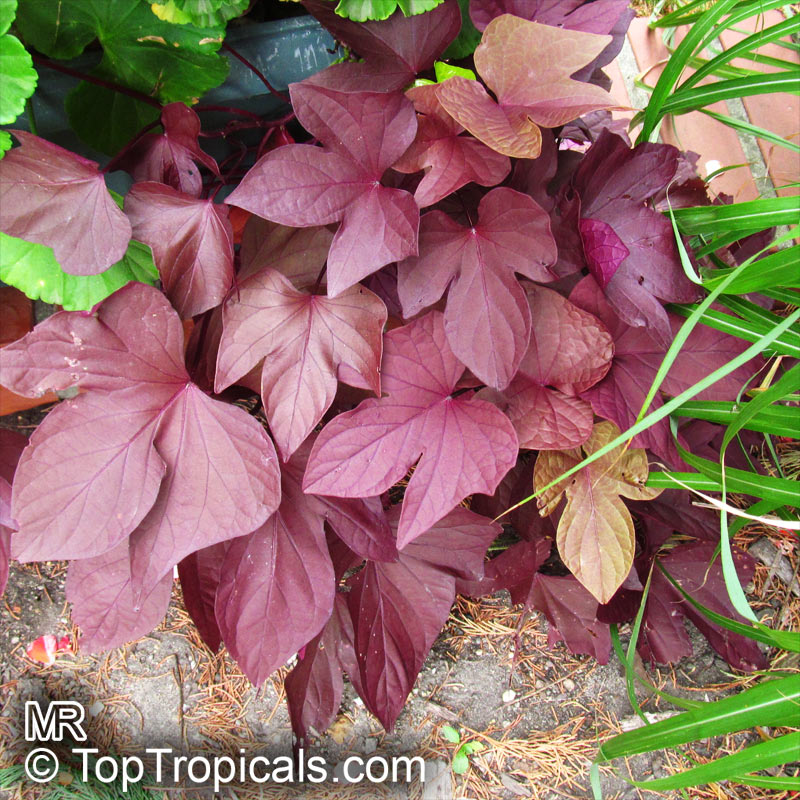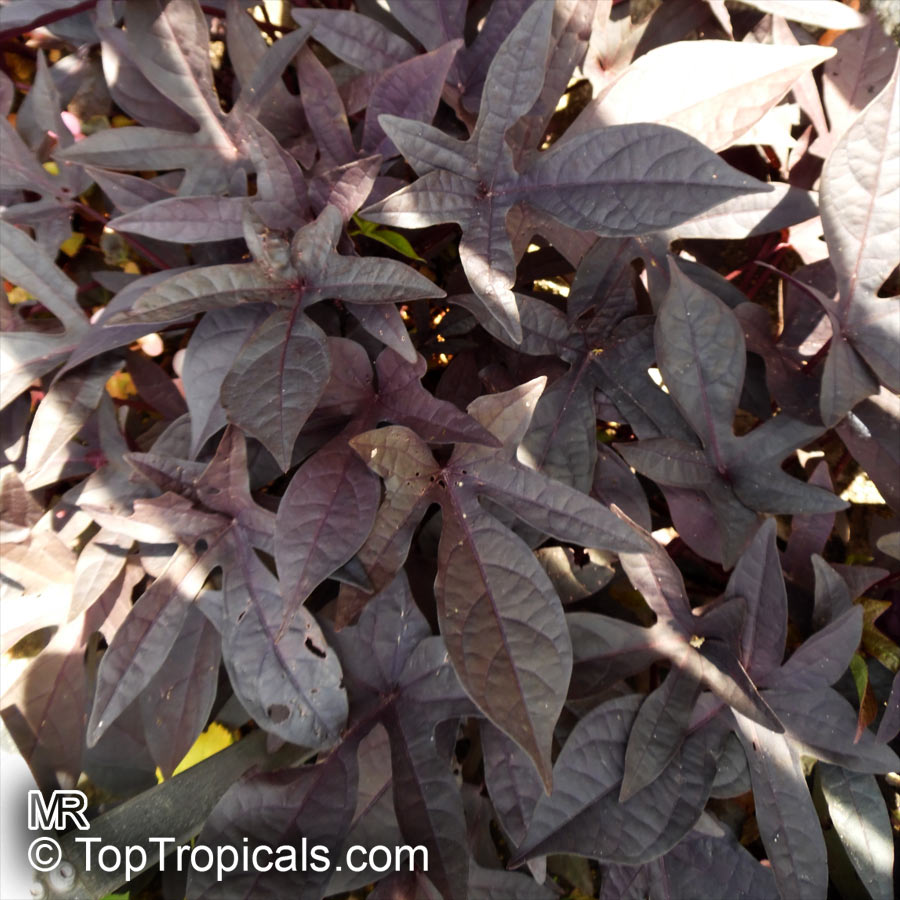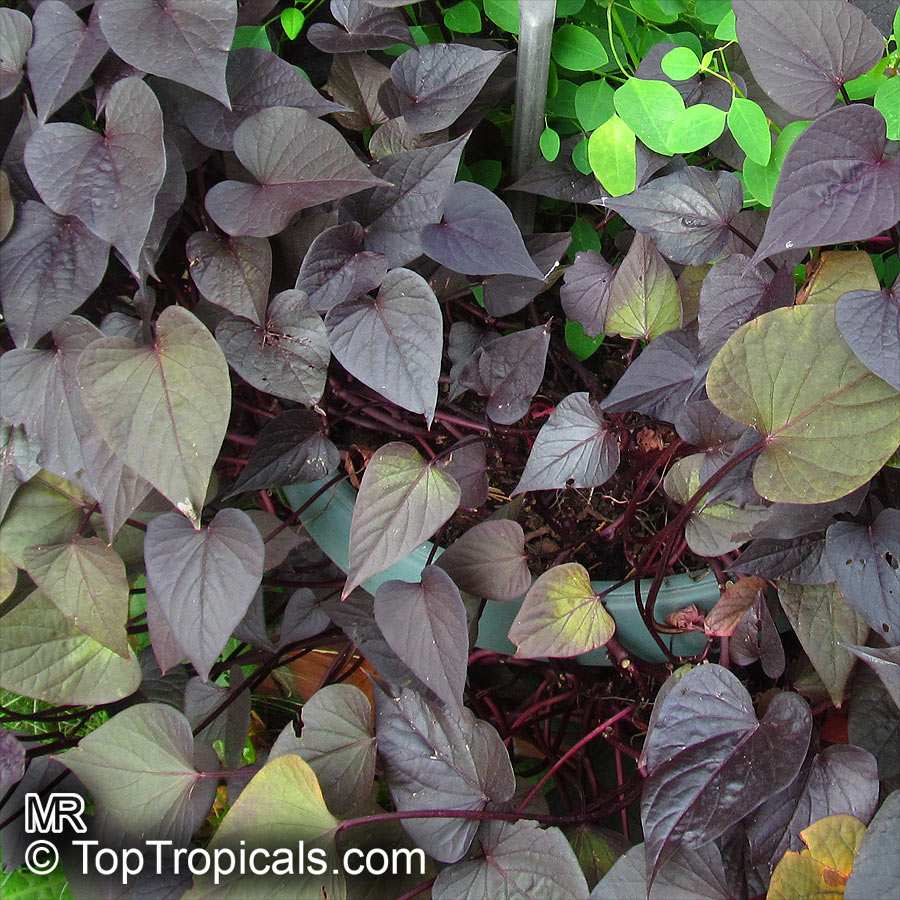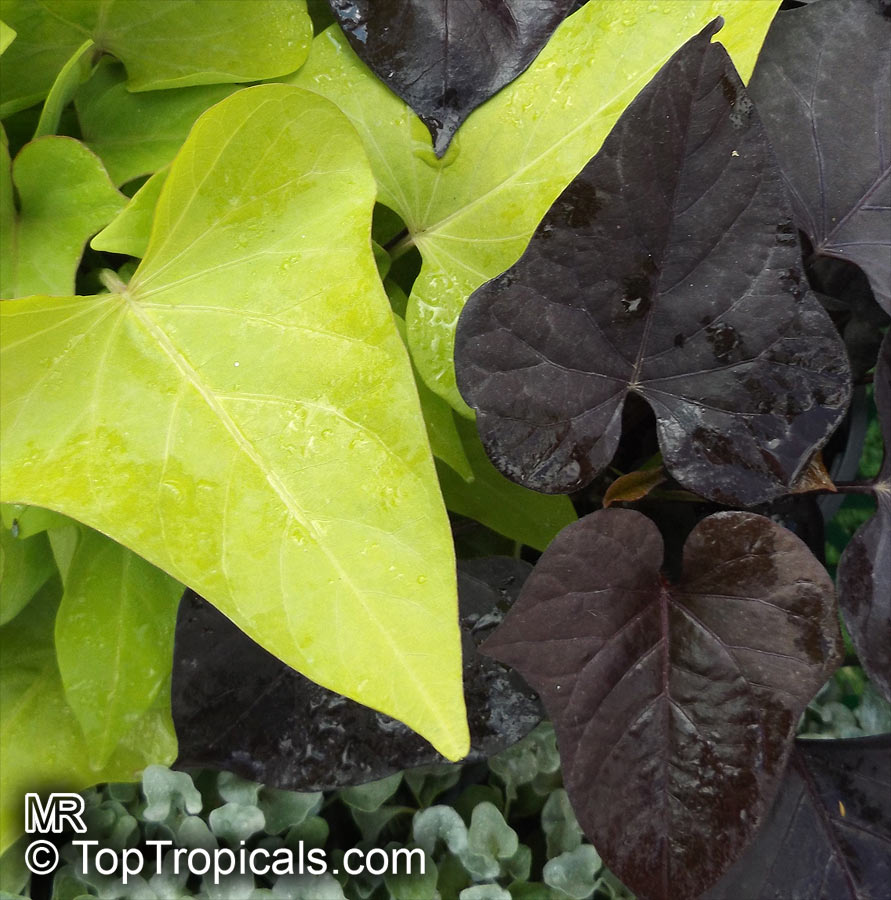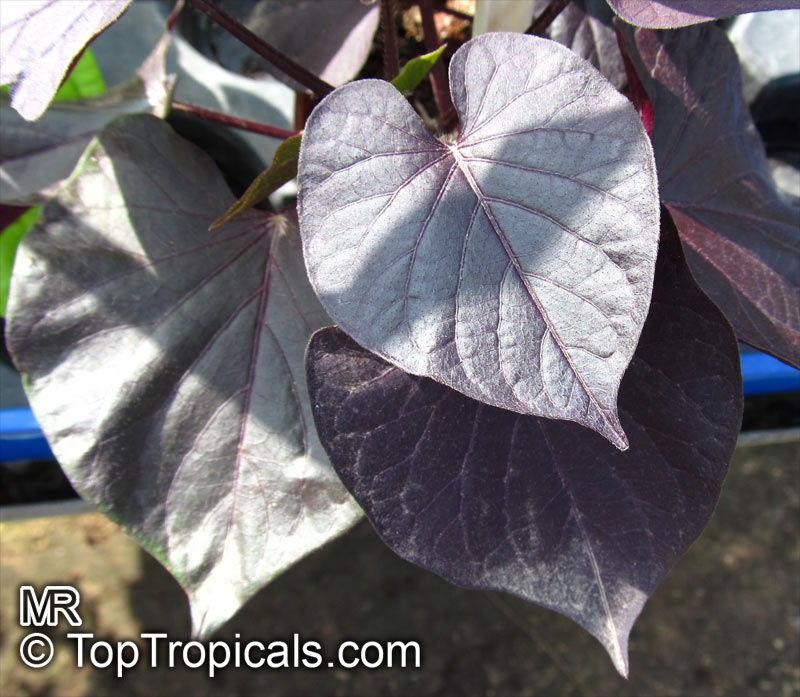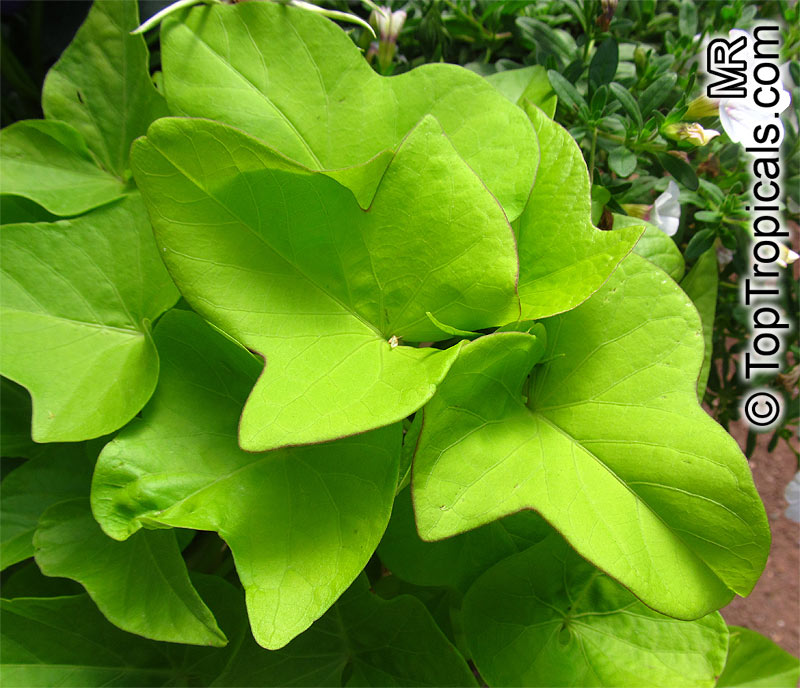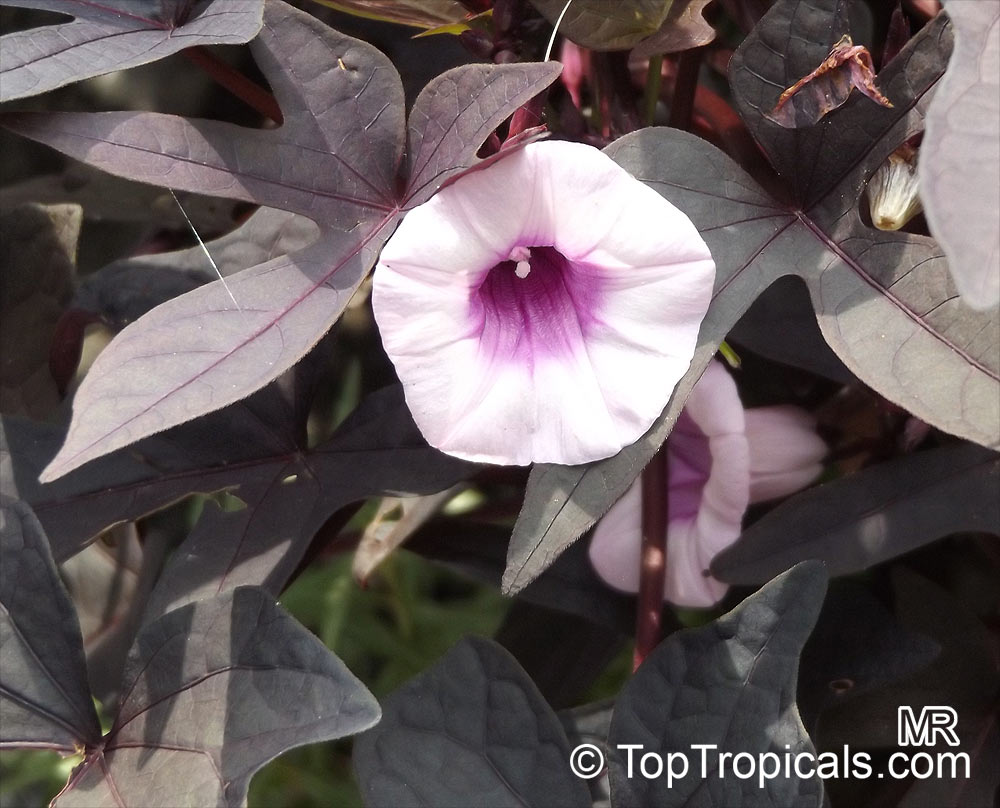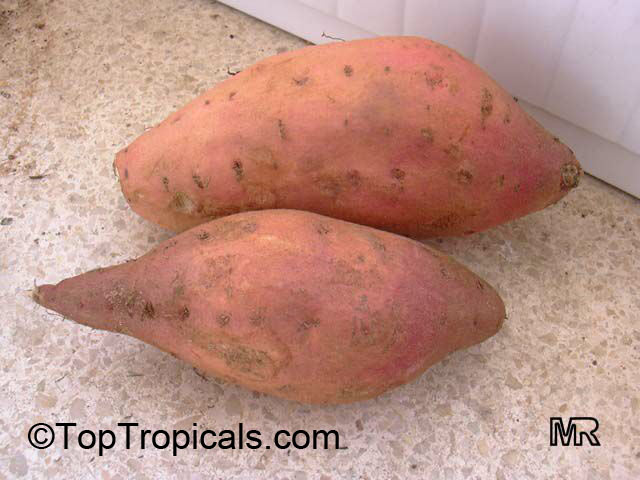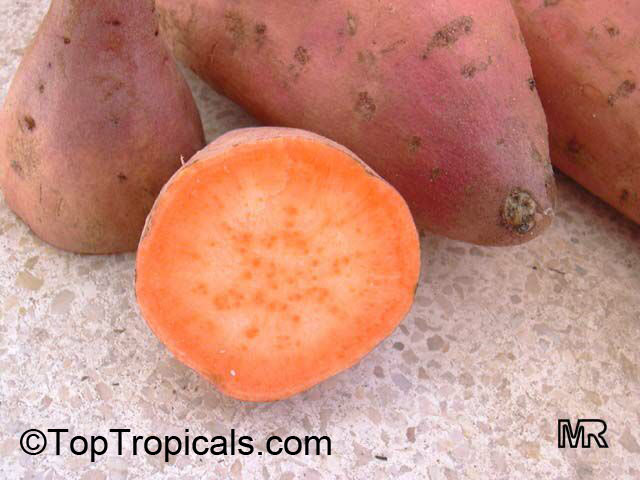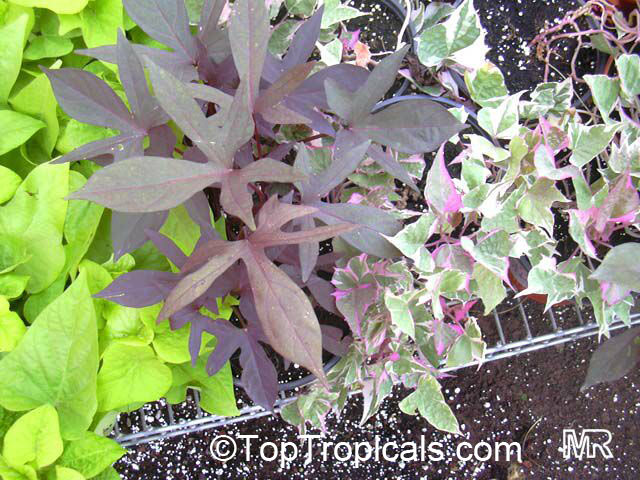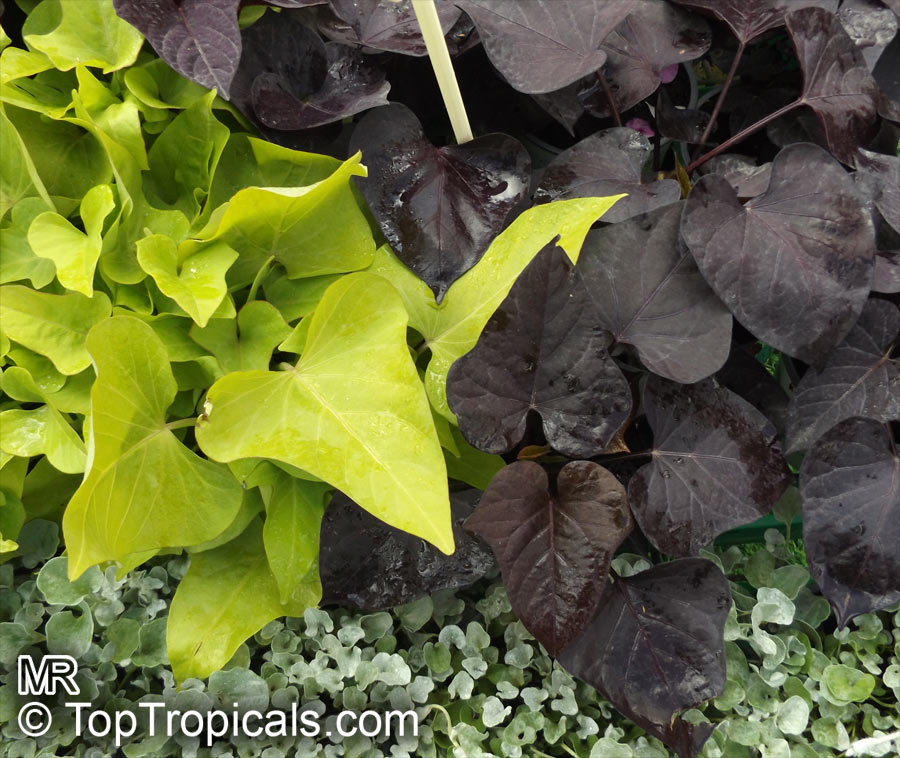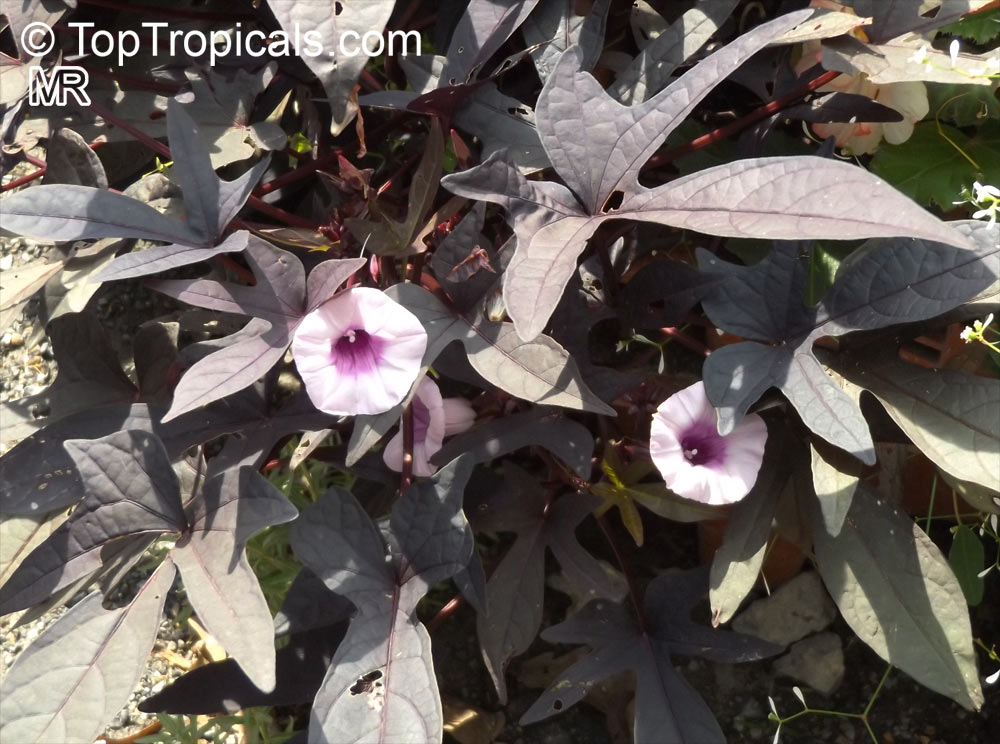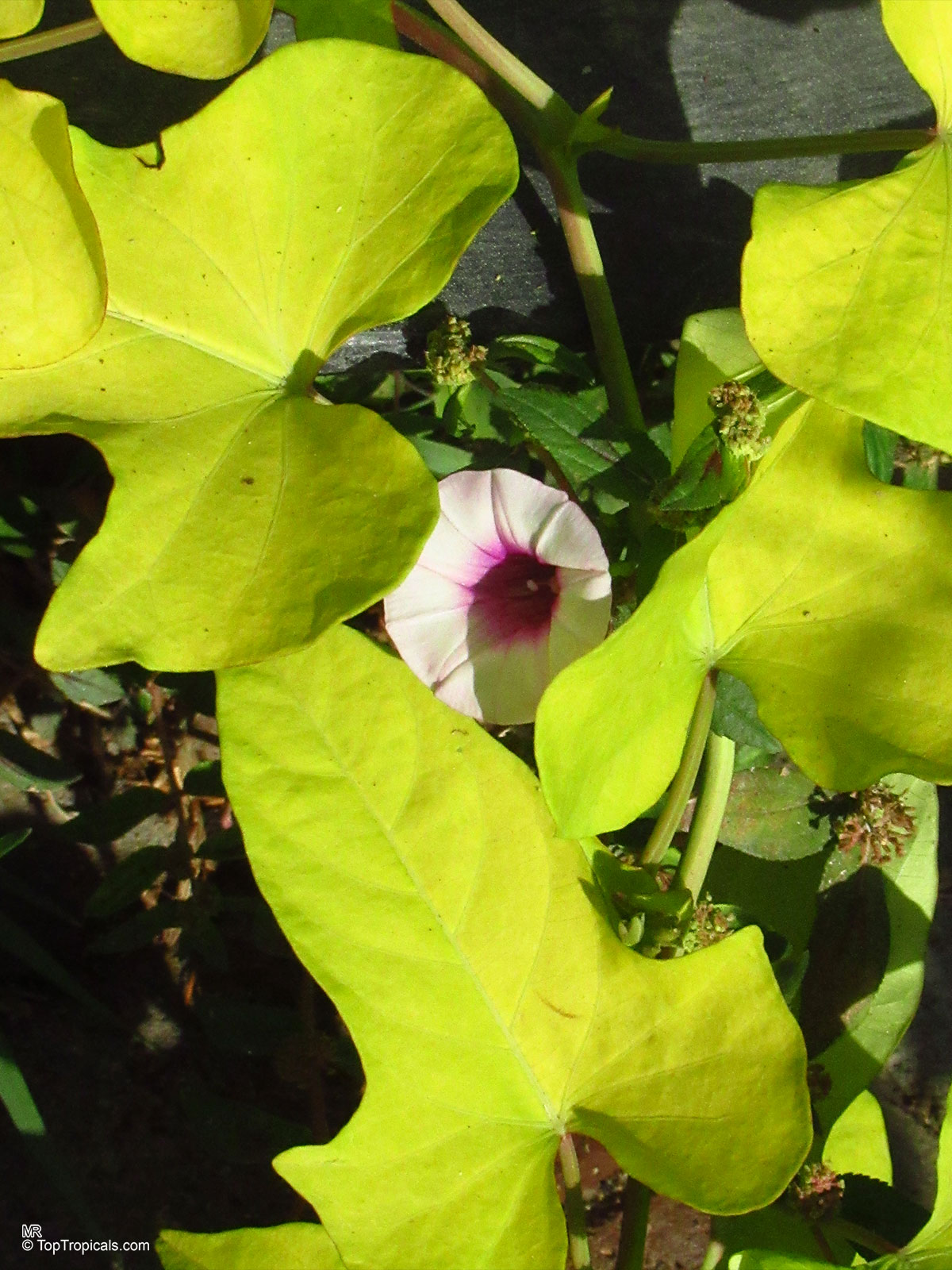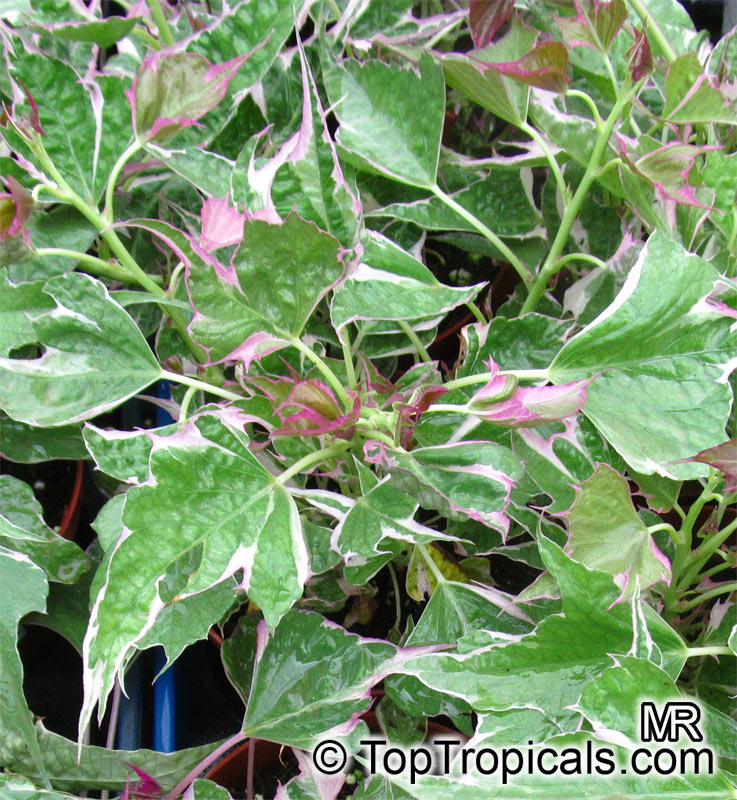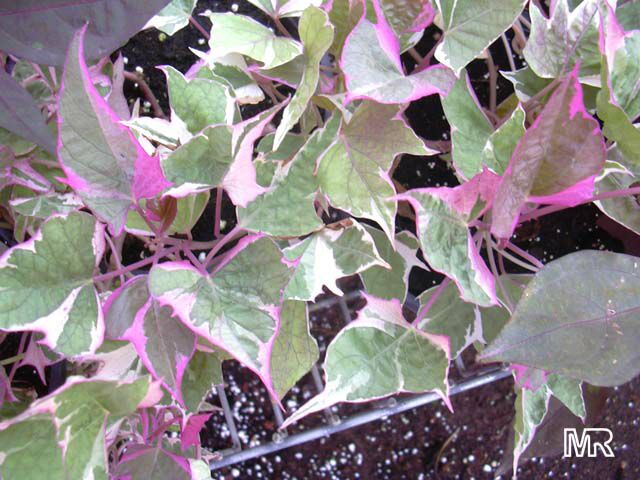Convolvulaceae - Botanical Family
Top Tropicals Plant Encyclopedia
| Number of plants found: 29 | Next | 
|
Go to page: | 1 | 2 | 3 |
Botanical names: Argyreia nervosa, Argyreia speciosa
Common names: Elephant creeper; Woolly Morning Glory, Hawaiian Baby Woodrose
Family: Convolvulaceae
Origin: India










A native of eastern India and Bangladesh, this vigorous twiner will grow 30 ft (9 m) or more into the treetops, but can be trained over a post or stump and kept trimmed to a moundlike form. A dense white down covers both young stems and leaf undersides. The leaves are ovate-cordate, to 1 foot across, white tomentose beneath with lateral veins conspicuous on the undersides. Tight clusters of trumpet-shaped bright pink flowers about 2 in (5 cm) across on pedicels to 6 inches long appear among the foliage in spring and summer. In a tropical climate cultivation is simple, the plants making very vigorous growth in a sunny position in moist soil. In cooler climates they can be grown in a sunny conservatory, but due to their rampant growth will need frequent cutting back. Propagate from seed or cuttings. Used medicinally in India. The roots and seeds of Elephant Creeper have been used as a support of the nervous system, a geriatric tonic and mild aphrodisiac. The whole plant is reported to have purifying properties. It is also taken to help maintain healthy joints.
Botanical names: Calonyction aculeatum, Ipomoea alba
Common name: Giant moonflower
Family: Convolvulaceae
Origin: Tropical America









When grown in their native climates, moonflowers (Calonyction aculeatum) prefer a full sun to semi-shade position and need regular water. In cooler regions, the vine should be grown in a container and placed in a warm, sheltered area of the garden. It needs to be watered regularly with moderate amount of water throughout its growing season. In winter, reduce watering and move the pot to a frost-free area.
Its trumpet-shaped, white or off-white flowers bloom in the evening and are very fragrant, thus it attracts various butterflies and hummingbirds. Be aware that this flower is considered invasive in some areas and its spread should be monitored carefully. It is best grown in USDA Zones 9-11.
Botanical name: Convolvulus sp.
Common name: Bindweed
Family: Convolvulaceae











They are annual or perennial herbaceous vines, bines and (a few species of) woody shrubs, growing to 0.3-3 m tall. The leaves are spirally arranged, and the flowers trumpet-shaped, mostly white or pink, but blue, violet, purple or yellow in some species.
Botanical name: Dichondra argentea
Common names: Silver Falls, Silver Dichondra, Silver Pony-foot, Kidneyweed
Family: Convolvulaceae
Origin: Southeast US






Dichondra argentea, commonly known as Silver Falls, is native to the Southeastern United States and is prized for its low-growing habit and ornamental foliage. This fast growing groundcover offers a stunning waterfall effect, cascading up to 2 feet of delicate silver-gray foliage. Silver Falls is a vigorous, easy to grow annual (or perennial, semi to fully deciduous in winter) that prefers a full sun to semi-shade spot with moderate water.
In warmer regions, Silver Falls can be grown in containers and hanging baskets as well as in gardens, providing dashes of silvery gray along pathways and besides garden beds. The plant will form a neat mound of foliage and, in full sun, even slightly silver-tinged. In colder regions, Silver Falls can be grown in containers and pots, allowing gardeners the ability to move the plant indoors if needed.
Silver Falls is an incredibly low maintenance plant and can tolerate short periods of drought. Regularly water, but avoid over-watering or you can risk root rot. An occasional trim to keep the foliage neat and tidy is all that is needed. For colorful accents, silver falls can be planted in combination with contrasting plants in mixed containers or beds. USDA Hardiness Zones 8-10.
Botanical names: Distimake dissectus, Merremia dissecta, Ipomoea sinuata, Convolvulus dissectus
Common names: Alamo Vine, White Convolvulus, Woodrose
Family: Convolvulaceae
Origin: South America








Alamo Vine is an unusual white perennial Morning Glory that opens around noon and then closes before sunset. Leaves are feathery that makes it an attractive ornamental vine, with fine texture and fast but compact growing habit, great for containers or trellises. Seeds germinate readily.
Ordering seeds info
RECOMMENDED SUPPLIES:
Seed Germination Mix #3, professional grade
SUNSHINE-Epi - Seeds and cuttings booster
SUNSHINE Bombino - Young Plant Booster
Botanical name: Evolvulus sp.
Common name: Dwarf Morning Glory
Family: Convolvulaceae
Origin: Americas






These plants are annual and perennial herbs and shrubs.
Botanical names: Ipomoea abrupta, Convolvulus abruptus
Common names: Bush Potato, Bush Yam
Family: Convolvulaceae
Origin: Western Australia






The bush potato will thrive in full sun or semi-shade and only requires moderate water. The plant is a vigorous, fast growing evergreen climber, twiner or creeper and will reach a height of 2 to 4 meters.
The flower colour varies from deep pink to white or off white. The flowers attract pollinators such as birds, bees and other insects. As far as growing, Ipomoea abrupta does best in USDA Zones 9-11. It makes a fast growing and attractive addition to any garden and is usually grown in either pots or containers and may require some pruning.
When growing Ipomoea abrupta in cold or temperate regions, it is best grown in pots or containers so it can be moved indoors during cold weather. When growing in pots, use a well-drained soil mixture and ensure that the pot is big enough for the roots to grow. Place the pot in a location with ample sunlight and water regularly, but do not over water. For more vigorous growth, you may need to fertilize the plant. To help the plant survive the cold weather, mulch the pot heavily and make sure to bring it indoors if frost is expected.
Botanical name: Ipomoea arborescens
Common names: Tree Morning Glory, Nahuatl, Ozote, Palo Blanco
Family: Convolvulaceae
Origin: Mexico




Rare in cultivation, this is a small size tree, but very rapidly growing 6-10 ft in a year! So you can have a mature specimen within 1-2 years. This caudiciform tropical tree is mostly found in Mexico. It has pretty white or cream flowers that are funnel-shaped. Flowers are major nectar sources for bats, hummingbirds, and bees.
Botanical name: Ipomoea batatas
Common names: Sweet Potato Vine, Camote, Boniato
Family: Convolvulaceae











This sought after "Golden Sweet Potato Vine" is a landscaper's dream. Gorgeous golden/purple foliage is easy to grow and will bring vibrant color and life to your container or garden edges. Full sun, grows to 6" in container, trailing in habit. Ipomoea batatas is easily propagated by stem cuttings and by division of the tubers.
See Article about this plant: Ipomoea batatas - Sweet Potatoes, healthy food for every kitchen.
Botanical name: Ipomoea batatas Pink Frost
Common name: Potato Vine Pink Frost
Family: Convolvulaceae









Its striking pink, white and green foliage attracts much attention when used in the garden border or patio container. A vining Sweet Potato, its vigorous growth will amaze you. Hardy Zone 10 and higher Full sun, grows to 6" in container, trailing in habit, minimum temperature 60°F.
| Next |  |
Use link to repeat this search:
https://toptropicals.com/cgi-bin/garden_catalog/cat.cgi?search_op=and&keyword_op=and&language=e&family=Convolvulaceae
&number=10&no_change_lang=1&user=tt&sale=1&first=0
